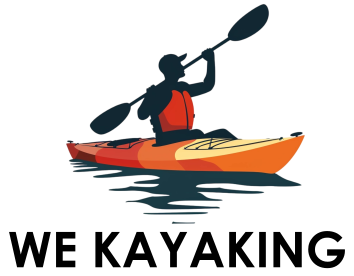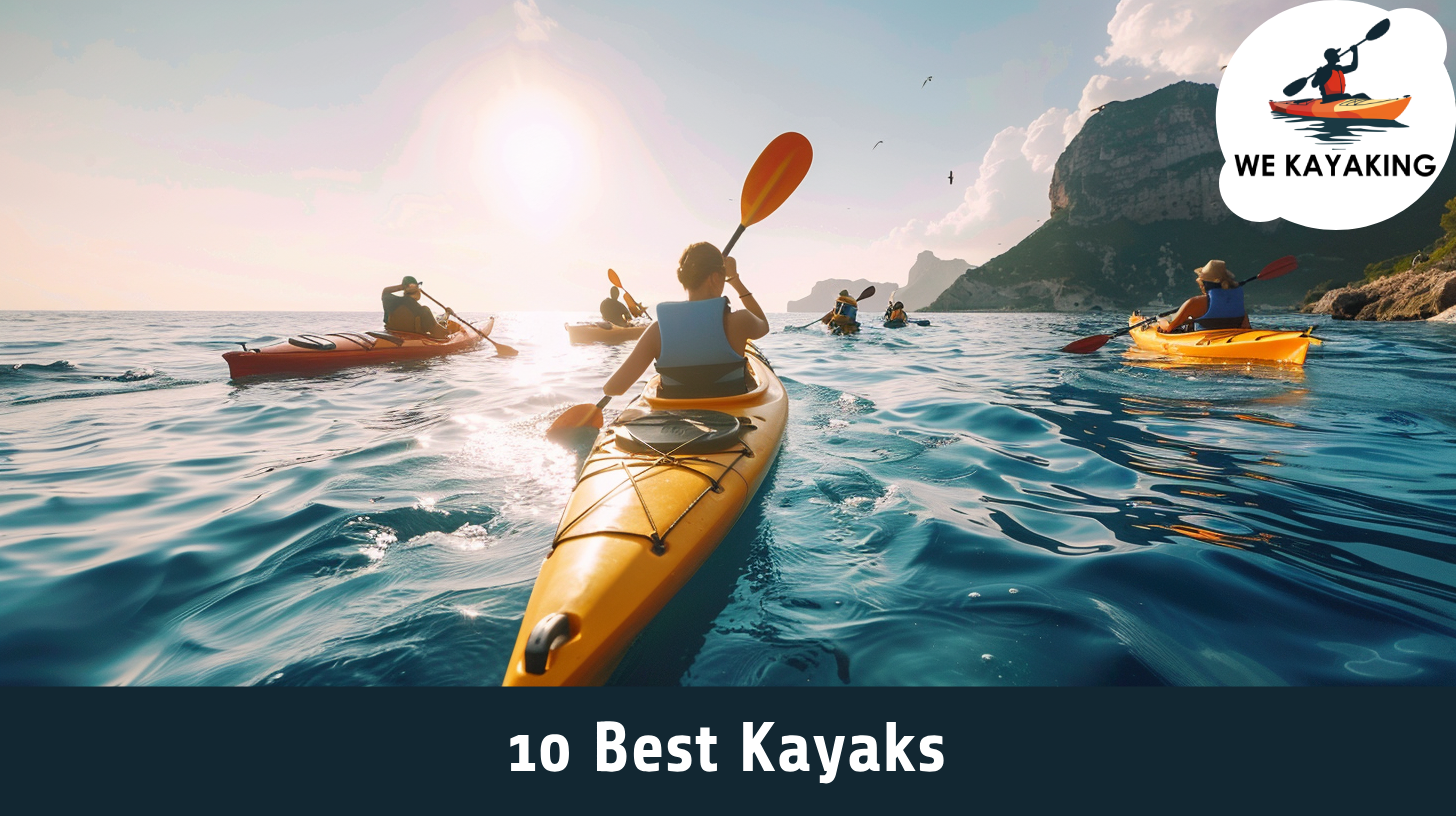
10 Best Kayaks For 2024
Kayaks are slender, lightweight boats designed for navigating waterways, ranging from serene lakes to rushing rivers. They come in various designs to cater to different paddling environments and personal preferences, including recreational, touring, inflatable, and whitewater kayaks. The selection of the ten best kayaks for 2024 is based on key criteria that ensure a diverse range of paddlers find their ideal match. These criteria include stability, maneuverability, durability, comfort, storage capacity, and the kayak’s suitability for specific environments, such as calm waters or challenging rapids.
When choosing a kayak, these factors influence the decision-making process. Stability ensures safety and confidence for paddlers, especially beginners. Maneuverability allows for precise control in diverse water conditions. Durability is crucial for longevity and dealing with the natural wear and tear of adventurous outings. Comfort ensures enjoyable, extended paddling sessions, while storage capacity is essential for those planning longer trips or needing to carry gear. Finally, the kayak’s design for specific environments ensures that paddlers have the right tools for their intended adventures, whether they’re leisurely cruising on a quiet lake or navigating the technical challenges of whitewater rapids.
By focusing on these criteria, the list of the 10 best kayaks for 2024 guides potential buyers in choosing a kayak that not only meets their immediate needs but also provides lasting value and enjoyment in their paddling experiences.
Table of Contents
1. Aquaglide Chelan 120
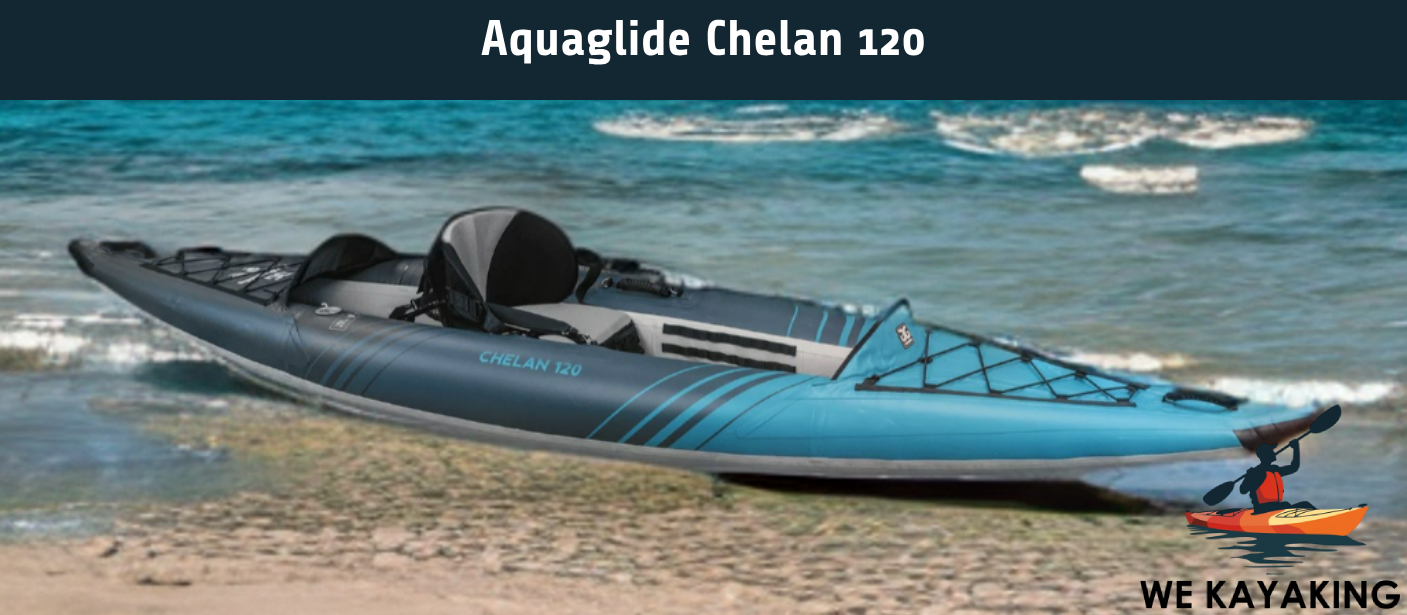 The Aquaglide Chelan 120 is a high-performance inflatable kayak known for its exceptional blend of speed, stability, and maneuverability. This kayak falls into the touring category, designed for longer paddling excursions with a sleek shape that cuts through water efficiently, making it an ideal choice for adventure enthusiasts. Weighing in at just around 28 lbs, it’s remarkably lightweight, allowing for easy transportation and handling. Its size is perfectly balanced at 12 feet in length, providing ample space without compromising on speed, which is a standout feature for those looking to cover distances quickly on water.
The Aquaglide Chelan 120 is a high-performance inflatable kayak known for its exceptional blend of speed, stability, and maneuverability. This kayak falls into the touring category, designed for longer paddling excursions with a sleek shape that cuts through water efficiently, making it an ideal choice for adventure enthusiasts. Weighing in at just around 28 lbs, it’s remarkably lightweight, allowing for easy transportation and handling. Its size is perfectly balanced at 12 feet in length, providing ample space without compromising on speed, which is a standout feature for those looking to cover distances quickly on water.
Stability is a hallmark of the Chelan 120, offering paddlers a secure and comfortable experience, crucial for both beginners and seasoned kayakers. Safety is enhanced by its durable material construction, which ensures it withstands various water conditions. The kayak’s superior maneuverability is attributed to its well-thought-out shape and design, allowing for precise control in diverse paddling environments.
Crafted from high-quality drop-stitch material, it promises longevity and resistance to wear and tear. Additionally, it boasts extra storage space, which is a boon for those embarking on longer journeys who need to carry gear and provisions. As a product of Aquaglide, a brand renowned for its commitment to innovation and quality in water sports, the Chelan 120 stands as a testament to its expertise. The Aquaglide Chelan 120 kayak falls within a price range of about $999.99 to $1,349.99. This variance in price points is attributed to factors such as the retailer, any ongoing promotions, and potential differences in model year or included accessories.
The advantages of the Aquaglide Chelan 120 Kayak are listed below.
- Its design emphasizes speed and efficiency in water, making it ideal for touring and adventure paddling.
- Weighing around 28 lbs, it is easy to transport and handle, enhancing its convenience for users.
- Offers a stable paddling experience, suitable for both beginners and experienced kayakers.
- Constructed from high-quality drop-stitch material, ensuring longevity and resistance to wear and tear.
- Well-designed shapes and sizes allow for precise control and maneuverability in various water conditions.
- It comes with ample storage space, making it practical for longer trips requiring additional gear.
The disadvantages of the Aquaglide Chelan 120 Kayak are listed below.
- Positioned at a premium price point, which is prohibitive for some potential buyers.
- While high-quality, inflatable kayaks are not able to offer the same rigidity and performance as hardshell kayaks in certain conditions.
- Maintenance requires proper care and maintenance to ensure the longevity of the inflatable material.
- Designed primarily for solo paddling, it is not suitable for those looking to kayak with partners or family.
| Feature | Aquaglide Chelan 120 Kayak |
| Length | 12 feet |
| Width | Not specified |
| Kayaker Position | Inside (sit-inside kayak) |
| Amount of Kayakers | 1 (solo kayak) |
| Propulsion System | Paddles |
2. Pelican Sentinel 100X Angler
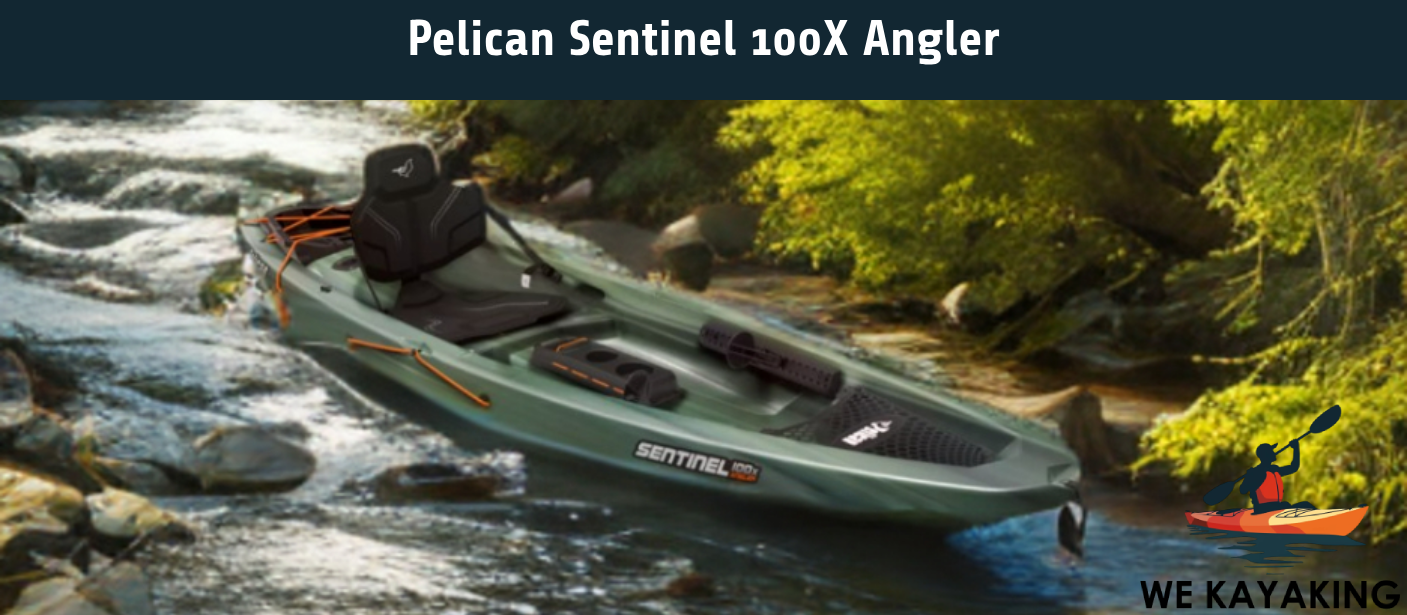 The Pelican Sentinel 100X Angler is a sit-on-top fishing kayak designed for anglers seeking a lightweight, stable, and maneuverable vessel. As a fishing kayak, it offers the advantage of being specifically outfitted for fishing with features like rod holders and gear compartments, enhancing the angling experience. Weighing approximately 44 lbs, it is relatively easy to carry and transport to your favorite fishing spots. The kayak measures 10 feet in length, optimizing the balance between speed and stability on the water.
The Pelican Sentinel 100X Angler is a sit-on-top fishing kayak designed for anglers seeking a lightweight, stable, and maneuverable vessel. As a fishing kayak, it offers the advantage of being specifically outfitted for fishing with features like rod holders and gear compartments, enhancing the angling experience. Weighing approximately 44 lbs, it is relatively easy to carry and transport to your favorite fishing spots. The kayak measures 10 feet in length, optimizing the balance between speed and stability on the water.
Its stability is particularly noteworthy, providing a secure platform for casting and reeling in fish, even for beginners. Safety is bolstered by its durable, impact-resistant material, ensuring a reliable experience. The Sentinel 100X’s design prioritizes maneuverability, allowing anglers to navigate through tight spots and around obstacles with ease. Constructed from Pelican’s RAM-X material, it promises durability and longevity, withstanding the rigors of frequent fishing trips.
Extra storage options are ample, including a tank well and a front storage platform, making it ideal for day-long fishing adventures. Pelican is a well-regarded brand in the kayak industry, known for combining quality and innovation in their products. The Pelican Sentinel 100X Angler kayak is priced at around $400 to $700, as listed on popular online retail platforms. This price reflects its specialized design for fishing, its lightweight build, and the convenience it offers anglers looking for a stable and maneuverable kayak.
The advantages of the Pelican Sentinel 100X Angler are listed below.
- Fishing-optimized with features like rod holders and gear compartments tailored for angling.
- It weighs around 44 lbs and is easy to transport and handle, making it convenient for various fishing locations.
- Offers excellent stability, providing a secure platform for fishing activities.
- Made with Pelican’s RAM-X material, ensuring impact resistance and longevity.
- Designed to navigate tight spaces and obstacles smoothly, enhancing the fishing experience.
- Includes ample storage options such as a tank well and front platform, ideal for day-long trips.
The disadvantages of the Pelican Sentinel 100X Angler are listed below.
- As a fishing kayak, it won’t be as fast as touring or racing kayaks, potentially limiting its use for long-distance paddling.
- While offering easier access and more room, it won’t be as protective against elements as sit-inside kayaks.
- Its specialized design for fishing is not appealing to those looking for a more versatile recreational kayak.
- Primarily designed for solo use, it does not suit those wanting to kayak with a partner or group.
| Feature | Pelican Sentinel 100X Angler |
| Length | 10 feet |
| Width | Not specified |
| Kayaker Position | On top (sit-on-top kayak) |
| Amount of Kayakers | 1 (solo kayak) |
| Propulsion System | Paddles |
3. Lifetime Tamarack Angler 100
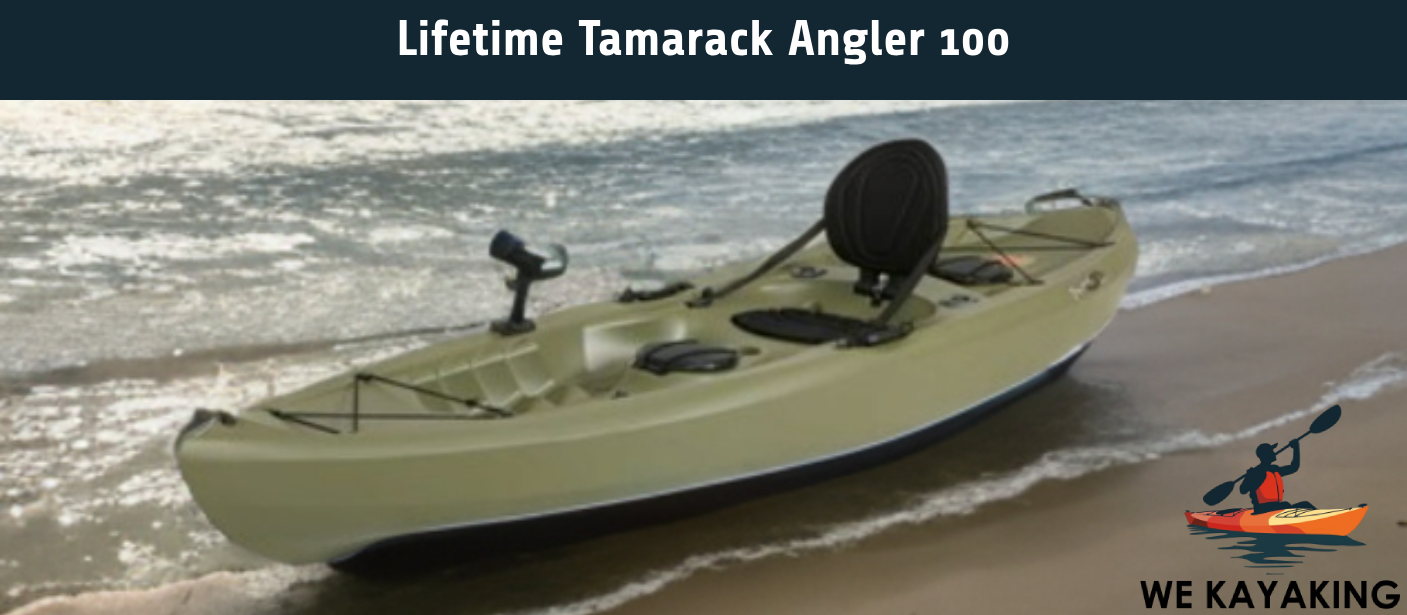 The Lifetime Tamarack Angler 100 is a sit-on-top fishing kayak designed with the angler in mind, offering a durable, stable, and versatile platform for fishing and recreational use. Weighing approximately 52 lbs, it strikes a balance between sturdiness and portability. The kayak spans 10 feet in length, making it compact enough for easy handling while still providing satisfactory speed and tracking for a fishing kayak.
The Lifetime Tamarack Angler 100 is a sit-on-top fishing kayak designed with the angler in mind, offering a durable, stable, and versatile platform for fishing and recreational use. Weighing approximately 52 lbs, it strikes a balance between sturdiness and portability. The kayak spans 10 feet in length, making it compact enough for easy handling while still providing satisfactory speed and tracking for a fishing kayak.
Stability is an important feature, with a wide and flat bottom that provides a secure and steady ride, which is essential for casting and reeling fish. Its high-density polyethylene construction, which is UV-protected and impact-resistant, improves safety while also ensuring durability and longevity. The Tamarack Angler 100 has excellent maneuverability due to its size and well-designed hull shape, allowing anglers to easily navigate through a variety of water conditions.
It also features several fishing-friendly extras, such as rod holders, storage compartments, and a comfortable padded seat, providing ample storage and convenience for anglers. Lifetime, the brand behind this kayak is known for producing high-quality outdoor sports equipment that combines functionality with affordability. The Lifetime Tamarack Angler 100 kayak is likely to be priced within the range of $250 to $550. This estimate considers the kayak’s design, material, and the brand’s positioning in the market, offering a budget-friendly option for anglers and recreational kayakers. The Lifetime Tamarack Angler 100 kayak is priced within the range of $250 to $550. This range considers the kayak’s design, material, and the brand’s positioning in the market, offering a budget-friendly option for anglers and recreational kayakers.
| Feature | Lifetime Tamarack Angler 100 |
| Length | 10 feet |
| Width | Not specified |
| Kayaker Position | On top (sit-on-top kayak) |
| Amount of Kayakers | 1 (solo kayak) |
| Propulsion System | Paddles |
4. INTEX Excursion Pro K2
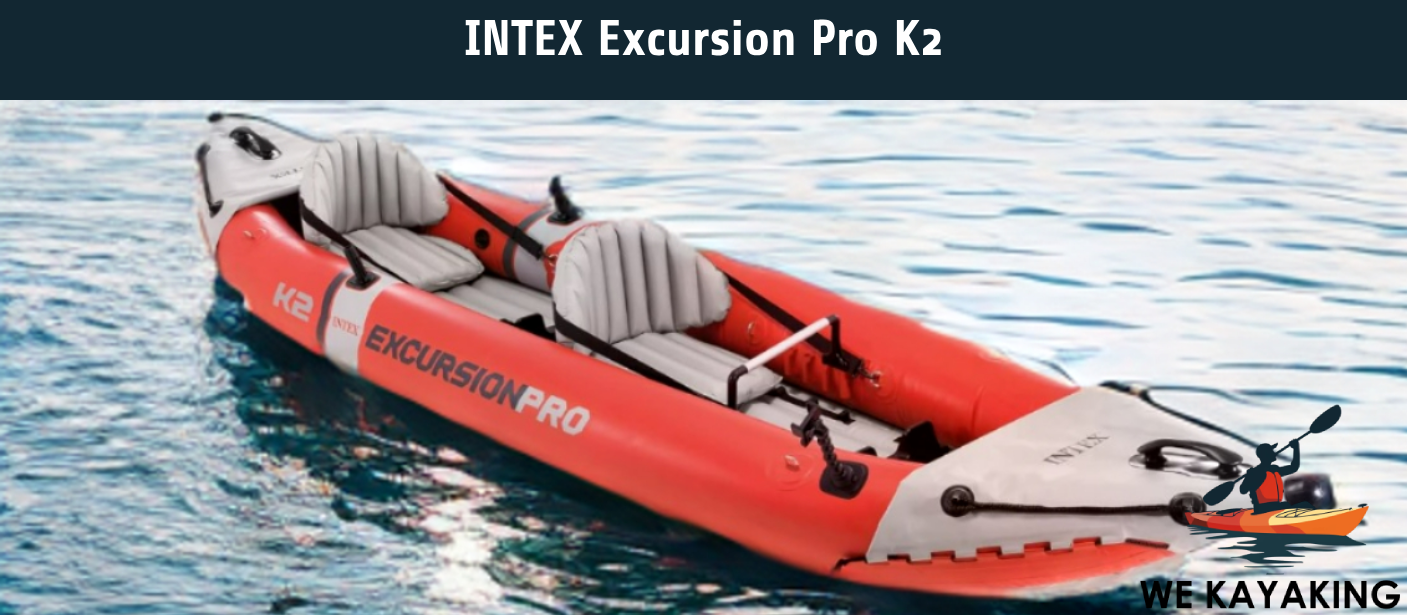 The INTEX Excursion Pro K2 is a high-quality inflatable kayak designed for a range of aquatic adventures. As a tandem kayak, it offers exceptional stability, making it a reliable choice for both beginners and experienced kayakers. Its speed is also rated very highly among kayakers, providing a balanced blend of pace and ease of handling. The kayak’s tracking ability ensures it maintains direction well, though it requires some effort to keep on course in strong currents or windy conditions.
The INTEX Excursion Pro K2 is a high-quality inflatable kayak designed for a range of aquatic adventures. As a tandem kayak, it offers exceptional stability, making it a reliable choice for both beginners and experienced kayakers. Its speed is also rated very highly among kayakers, providing a balanced blend of pace and ease of handling. The kayak’s tracking ability ensures it maintains direction well, though it requires some effort to keep on course in strong currents or windy conditions.
Weighing in at 46.7 lbs (21 kg), the Excursion Pro K2 is relatively lightweight, enhancing its portability. Despite its manageable weight, it doesn’t compromise on size or capacity, measuring 12 ft. 7 in. (384 cm) in length and 36 in. (91 cm) in width, with a load capacity of 400 lbs (181 kg). This makes it spacious enough for two adults or a combination of an adult and a child.
Designed with high-pressure inflation and I-beam flooring, the kayak boasts increased rigidity and structure, akin to that of traditional kayaks. This feature not only contributes to its stability during launch and landing but also enhances its overall performance on the water. The kayak is constructed with a three-layer, polyester core PVC, making it resistant to abrasions, impacts, and various environmental conditions such as exposure to rocks, trees, saltwater, and gasoline.
The Excursion Pro K2 includes several features aimed at enhancing comfort and convenience. These include adjustable seats and footrests, removable skegs for varying water depths, integrated fishing rod holders, and additional accessory mounts. For storage, it offers space in the bow and stern, complemented by stainless steel D-rings for securing gear. The kayak also comes with a carry bag, repair patch, 86 aluminum oars, and a high-output pump, providing an all-in-one package for kayaking enthusiasts.
Priced at $268.99 to $397.99, the Excursion Pro K2 offers great value for its features and performance. It’s a versatile option suitable for various activities, including recreational paddling, fishing, and exploring different waters.
The advantages of INTEX Excursion Pro K2 are listed below.
- The high stability of the INTEX Excursion Pro K2 provides a secure and steady experience on the water, suitable for both novices and seasoned kayakers.
- Weighing just 46.7 lbs, it’s relatively easy to transport and manage on land, enhancing its portability.
- High-pressure inflation and I-beam flooring give it a solid structure, making it perform more like a traditional kayak.
- Made with a three-layer, polyester core PVC, it’s resistant to abrasions, impacts, and various environmental factors.
- Equipped with features like adjustable seats and footrests, removable skegs, and fishing rod holders, it’s suitable for various activities.
- It offers space in the bow and stern, along with stainless steel D-rings for securing gear, making it convenient for longer trips.
The disadvantages of INTEX Excursion Pro K2 are listed below.
- Though it includes adjustable seats, it lacks long-term comfort for extended periods on the water.
- The large sidewalls, while contributing to stability, feel confining for individuals with a larger build.
- With a maximum load capacity of 400 lbs, it’s more suited for two smaller adults or one adult and a child, which limits usage for larger individuals or additional gear.
- The angle of the fishing rod holders is not ideal, particularly when two people are in the kayak, potentially interfering with paddling or comfort.
| Feature | Specification |
| Length | 12 ft. 7 in. (384 cm) |
| Width | 36 in. (91 cm) |
| Kayaker Position | Inside |
| Amount of Kayakers | 2 |
| Propulsion System | Paddles |
5. NRS Kuda
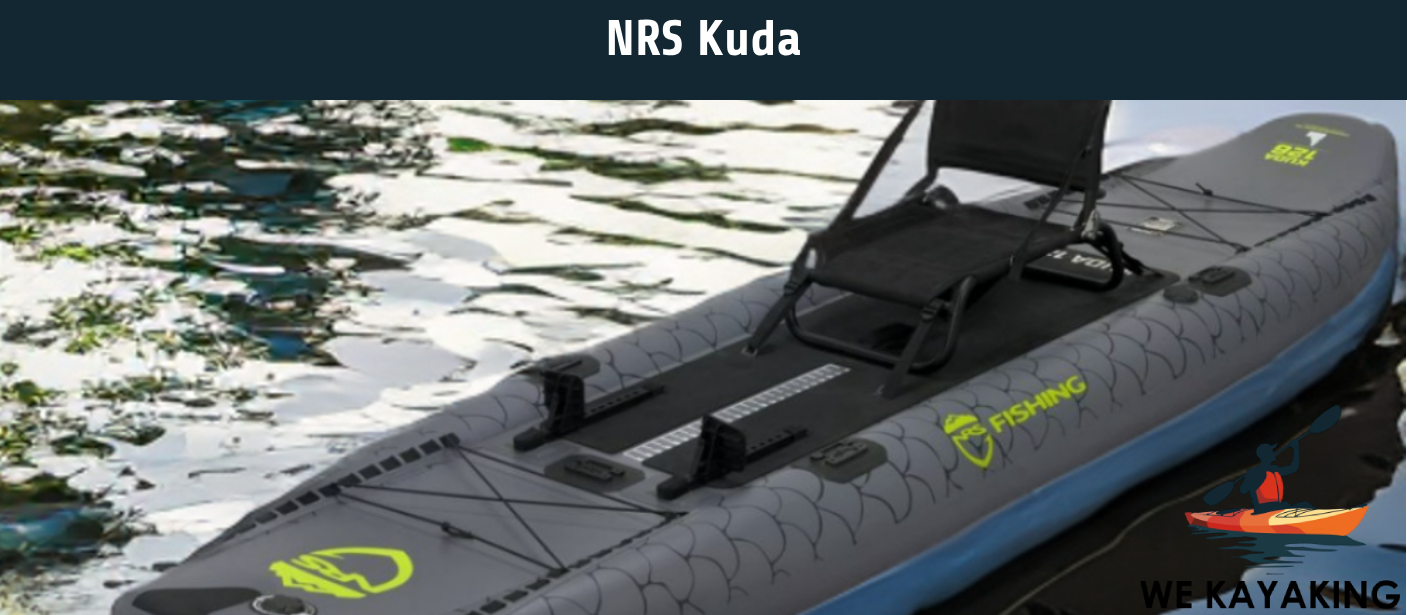 The NRS Kuda is an inflatable sit-on-top kayak known for its versatility and ease of use, particularly appealing to fishing enthusiasts and family adventurers. This kayak blends the benefits of a sit-on-top design with the convenience of an inflatable, making it an excellent choice for those with limited storage space or the need to transport it in smaller vehicles. The Kuda is available in two sizes: the 10.6 model, which is highly maneuverable and light at 27 lbs, and the 12.6 model, slightly larger at 31 lbs, offering more room for gear without compromising functionality.
The NRS Kuda is an inflatable sit-on-top kayak known for its versatility and ease of use, particularly appealing to fishing enthusiasts and family adventurers. This kayak blends the benefits of a sit-on-top design with the convenience of an inflatable, making it an excellent choice for those with limited storage space or the need to transport it in smaller vehicles. The Kuda is available in two sizes: the 10.6 model, which is highly maneuverable and light at 27 lbs, and the 12.6 model, slightly larger at 31 lbs, offering more room for gear without compromising functionality.
One of the standout features of the NRS Kuda is its stability, allowing for both sitting and standing activities such as casting and sight fishing. This is achieved through a high-pressure 6" drop-stitch deck combined with 9" side tubes, creating a stable platform. The kayak is equipped with an aluminum-frame suspended-mesh seat, providing comfortable elevation for better visibility and ease of standing. For those concerned about safety, the Kuda’s construction includes multiple air chambers and high-quality PVC material, ensuring durability and resistance to the elements.
Maneuverability is enhanced by the inclusion of a skeg plate that accommodates interchangeable fins, allowing for adaptation to various water conditions. The kayak’s shape and lightweight design contribute to its easy handling and tracking capabilities. For anglers, the Kuda offers ample storage options with daisy chain attachment points along the bow and stern, and an integrated fish measuring board on the deck pad, facilitating convenient gear organization and fish size assessment.
The NRS brand is well-regarded for its commitment to quality and innovation in water sports equipment. The Kuda’s price range reflects its premium features and brand reputation, with the 10.6 model priced at around $925 and the 12.6 model around $1,495, offering a solid investment for serious anglers and water sports enthusiasts looking for a reliable and versatile inflatable kayak.
The advantages of NRS Kuda are listed below.
- The high stability makes it ideal for both sitting and standing, making it perfect for fishing and recreational activities.
- The 10.6 model is especially easy to handle due to its light weight of 27 lbs, while the 12.6 model is only slightly heavier at 31 lbs.
- The inflatable design allows it to be compactly stored and easily transported in the trunk or back seat of a car.
- Made with high-quality PVC and multiple air chambers for added safety and longevity.
- Equipped with features like a fish measuring board, YakAttack accessory mounts, and adjustable foot pegs, it is suitable for various activities.
- The aluminum-frame suspended-mesh seat provides elevated seating for better visibility and comfort.
- It offers multiple attachment points for gear, enhancing its utility for fishing trips.
The disadvantages of NRS Kuda are listed below.
- As an inflatable kayak, it does not offer the same speed as hard-shell models, particularly in challenging water conditions.
- It requires time to inflate before use, which is not ideal for those seeking immediate water access.
- While made of durable material, it is still susceptible to punctures, which require repairs to maintain functionality.
- New users need time to adjust to the kayak’s stability, especially when standing for activities like sight casting.
| Feature | NRS Kuda 10.6 Model | NRS Kuda 12.6 Model |
| Length | 10'8" (3.25m) | 12'6" (3.81m) |
| Width | 38" (96.5cm) | 38" (96.5cm) |
| Kayaker Position | On Top | On Top |
| Amount of Kayakers | 1 | 1 |
| Propulsion System | Paddles | Paddles |
6. Driftsun Teton 120
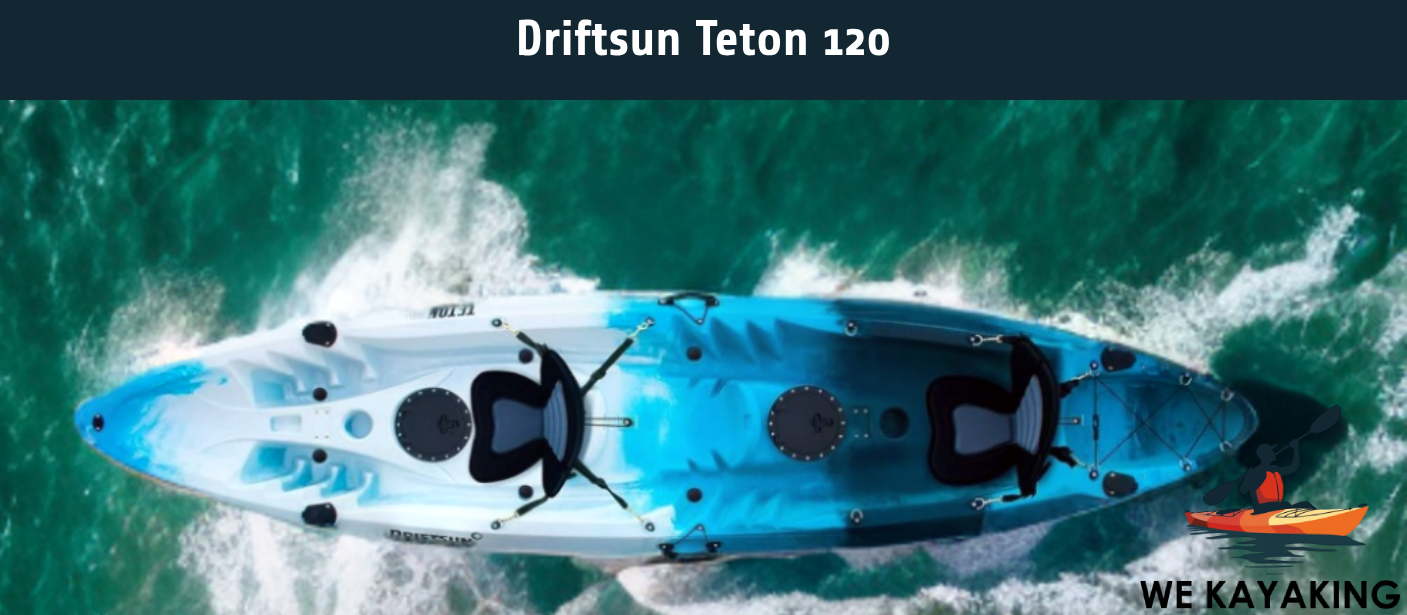 The Driftsun Teton 120 is a versatile tandem kayak designed for a range of water activities. This kayak is crafted from durable rotomolded plastic, ensuring it withstands various water conditions. It measures 12 feet 2 inches (370.8 cm) in length and 32 inches (81.3 cm) in width, with a weight of 72 pounds (32.6 kg) and a load capacity of 500 pounds (226.7 kg), making it suitable for two adults and potentially an additional small passenger or pet.
The Driftsun Teton 120 is a versatile tandem kayak designed for a range of water activities. This kayak is crafted from durable rotomolded plastic, ensuring it withstands various water conditions. It measures 12 feet 2 inches (370.8 cm) in length and 32 inches (81.3 cm) in width, with a weight of 72 pounds (32.6 kg) and a load capacity of 500 pounds (226.7 kg), making it suitable for two adults and potentially an additional small passenger or pet.
Key features include its high stability, facilitated by a wide hull design, making it suitable for rivers, ocean surf, flat water, and windy or choppy conditions. The Driftsun Teton 120 is well-equipped for fishing enthusiasts, featuring four flush mount rod holders, two active rod holder mounting points, ample storage, including rear bungee tank well storage, paddle parks and rests, built-in cup holders, and self-bailing scupper plugs.
Priced at approximately USD 1499, the Teton 120 represents a mid to high-end option in the kayak market, reflecting Driftsun’s commitment to quality materials and workmanship. It’s designed for those seeking an adventurous yet stable and comfortable kayaking experience.
The advantages of Driftsun Teton 120 are listed below.
- Suitable for paddling, fishing, and touring, it accommodates a variety of water activities.
- The Driftsun Teton 120 is used for both tandem and solo paddling with three seating positions, adding flexibility for users.
- It has a wide balance hull that offers unmatched stability and tracking for a smooth ride in diverse water conditions.
- Equipped with four flush mount rod holders, two active rod holder mounting points, and rear bungee tank well storage for ample gear accommodation.
- Made from rotomolded plastic, ensuring long-lasting use and resistance to harsh water conditions.
- With a 500-pound capacity, it easily holds 2 adults plus additional gear or a small passenger.
The disadvantages of Driftsun Teton 120 are listed below.
- Weighing 72 pounds, it is challenging to transport and maneuver out of the water for some users.
- Priced at approximately $1499, it is considered expensive for budget-conscious buyers.
- Its length of 12 feet 2 inches requires more storage space, which could be a limitation for those with limited storage options.
- The kayak’s features and size are overwhelming for absolute beginners, requiring some kayaking experience for optimal use.
| Feature | Specification |
| Length | 12' 2" (370.8 cm) |
| Width | 32" (81.3 cm) |
| Kayaker Position | On Top |
| Amount of Kayakers | 2 (Tandem) |
| Propulsion System | Paddles |
7. Sun Dolphin Journey 10 SS
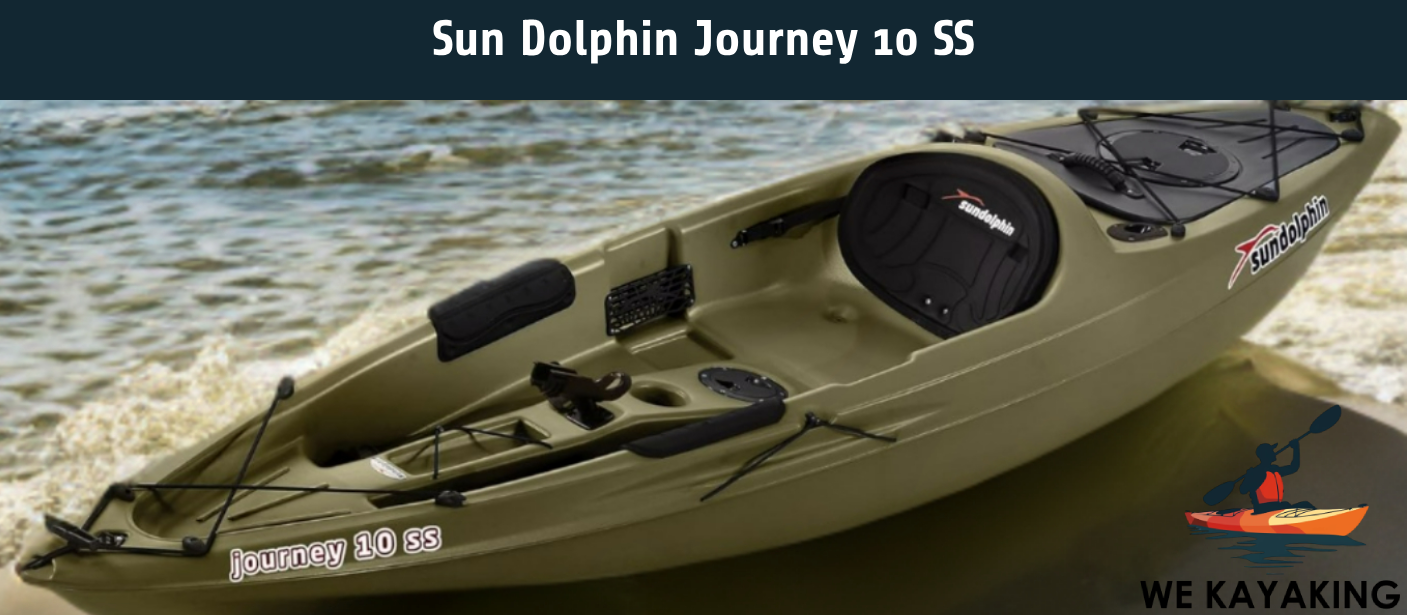 The Sun Dolphin Journey 10 SS is a sit-on-top recreational fishing kayak designed for stability and comfort, particularly suited for beginners and those prioritizing a stable paddling experience over speed and high maneuverability. This kayak is perfect for sheltered waterways like lakes, estuaries, or slow-moving streams due to its design focused on stability.
The Sun Dolphin Journey 10 SS is a sit-on-top recreational fishing kayak designed for stability and comfort, particularly suited for beginners and those prioritizing a stable paddling experience over speed and high maneuverability. This kayak is perfect for sheltered waterways like lakes, estuaries, or slow-moving streams due to its design focused on stability.
With dimensions of 9'6" in length and 29.5" in width, and weighing 44 lbs, the Journey 10 SS supports a capacity of up to 250 lbs. Its compact size contributes to its maneuverability, allowing paddlers to navigate tight spaces easily, although this does impact its speed and tracking ability. The kayak’s shorter keel means it’s not the fastest on the water, and it struggles to maintain a straight path, especially in windy or rough conditions.
Constructed from UV-stabilized Fortiflex High-Density Polyethylene, the Journey 10 SS offers durability and resistance to the wear and tear of fishing trips. It includes features such as one swivel and two flush mount rod holders, a Portable Accessory Carrier (P.A.C.) for additional storage, adjustable foot braces, and a large open cockpit for easy entry. However, the kayak’s stability is not sufficient to allow standing, and the seat back is not adjustable, which could affect comfort during longer outings.
Priced affordably, the Sun Dolphin Journey 10 SS provides good value for beginner kayakers and anglers looking for a budget-friendly option without sacrificing quality. It’s manufactured in the USA by Sun Dolphin, the largest kayak manufacturer in the world by production volume, known for its wide distribution and availability at popular retail chains in North America
The advantages of Sun Dolphin Journey 10 SS are listed below.
- It is designed for stability, making it a suitable choice for beginners and recreational fishing.
- The short keel enhances maneuverability, allowing access to tight spots.
- It is constructed from UV-stabilized Fortiflex High-Density Polyethylene for long-lasting use.
- Features ample storage options, including a Portable Accessory Carrier (P.A.C.), for gear and tackle.
- Offers a good balance of features and quality at a budget-friendly price point.
- The open cockpit design allows easy entry and exit, suitable for various body types.
- The lightweight design facilitates easier transportation and handling.
The disadvantages of Sun Dolphin Journey 10 SS are listed below.
- A shorter keel length restricts its speed, making it less suitable for covering longer distances quickly.
- Struggles with maintaining a straight path, particularly in windy or rough conditions.
- Does not provide enough stability for standing, especially for fishing activities.
- The seat could be more comfortable, with limited adjustability and padding.
- A lower weight capacity limits the amount of gear and catch that is safely carried.
| Feature | Specification |
| Length | 12' 2" (370.8 cm) |
| Width | 32" (81.3 cm) |
| Kayaker Position | On Top |
| Amount of Kayakers | 2 (Tandem) |
| Propulsion System | Paddles |
8. Perception Pescador Pro 10
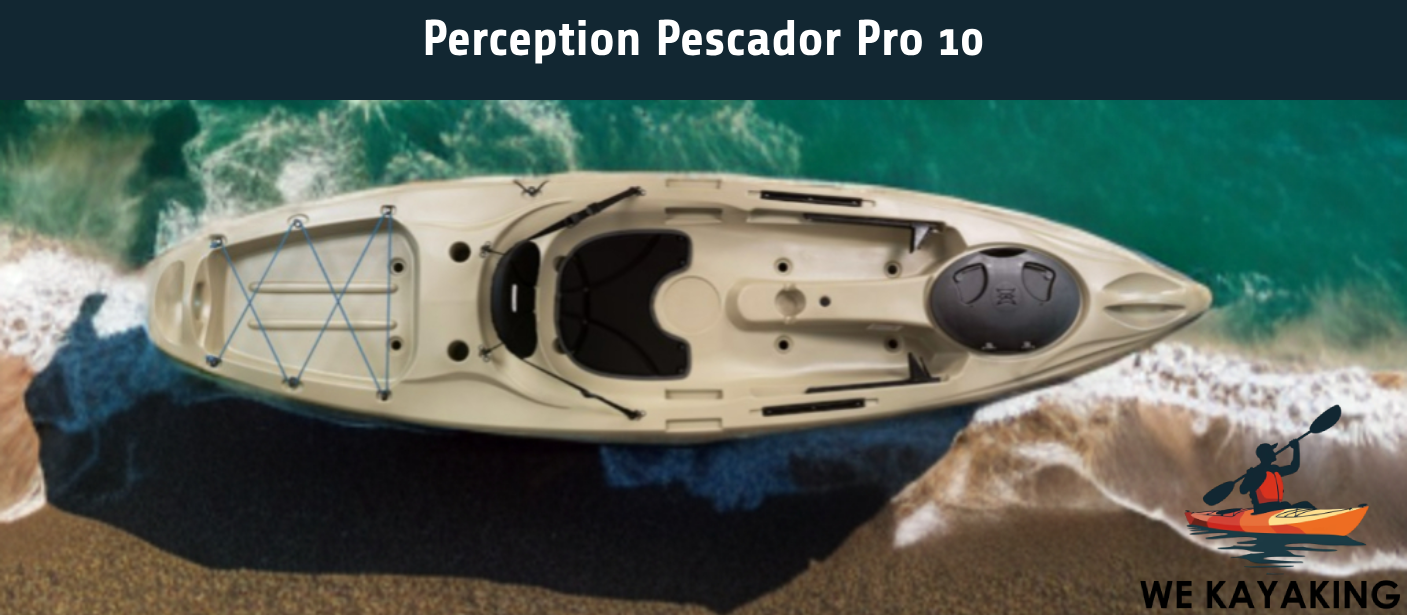 The Perception Pescador Pro 10 is a sit-on-top kayak for fishing enthusiasts and recreational paddlers. Its polyethylene construction ensures durability and resistance to elements, while its lightweight design, weighing 57 lbs, makes it easy to transport. The kayak measures 10'6" in length and 32" in width, offering stability and maneuverability, which is beneficial for navigating through various water conditions. It’s ideal for smaller to average-sized adults across all skill levels, from beginners to advanced paddlers.
The Perception Pescador Pro 10 is a sit-on-top kayak for fishing enthusiasts and recreational paddlers. Its polyethylene construction ensures durability and resistance to elements, while its lightweight design, weighing 57 lbs, makes it easy to transport. The kayak measures 10'6" in length and 32" in width, offering stability and maneuverability, which is beneficial for navigating through various water conditions. It’s ideal for smaller to average-sized adults across all skill levels, from beginners to advanced paddlers.
The Pescador Pro 10 stands out for its storage solutions, featuring an open-hull storage design with a bow tank well covered with mesh, a molded-in recess under the seat for tackle boxes, and an oversized stern tank well secured with bungee cords. This layout is great for keeping gear and catches secure during paddling adventures. Although the kayak comes with two molded-in rod holders behind the seat, it provides inserts across the deck for customizable gear mounts, allowing you to attach additional accessories like rod holders or a GoPro without drilling holes.
The kayak’s stability is noted for its wide beam, offering a good balance between primary and secondary stability, which is essential for getting in and out of the kayak and handling choppy waters. However, its width and length mean it requires more effort to maintain speed over long distances. Despite this, its excellent maneuverability compensates, making it responsive and easy to control, especially in tight spaces.
Comfort is a highlight of the Pescador Pro 10, featuring a stadium-style seat that is adjustable and removable, providing good lumbar support for long hours on the water. Adjustable footrests further enhance comfort, ensuring a suitable paddling position for various heights.
Priced at around $899 to $999, the Perception Pescador Pro 10 offers a solid blend of features, performance, and value, making it a compelling choice for those looking to enjoy calm to moderately choppy waters, primarily in lakes, ponds, and coastal areas where stability and maneuverability are key. However, its storage capacity is limited for those needing extensive gear on their trips, and it is not the best option for larger individuals or those planning to stand while fishing.
The advantages of Perception Pescador Pro 10 are listed below.
- The Pescador Pro 10 is constructed from high-quality polyethylene, ensuring longevity and resistance to elements.
- Weighing only 57 lbs, it is easy to transport and maneuver, both in and out of the water.
- It offers remarkable stability for its size, providing a comfortable and secure paddling experience.
- Features a stadium-style seat that is adjustable and removable, enhancing comfort during long paddling sessions.
- It includes gear tracks and multiple inserts for easy customization without drilling holes.
- It offers ample storage with a bow tank well, stern tank well, and under-seat recess for gear and catches.
- It is highly responsive and easy to control, making it suitable for navigating tight spaces.
- Ideal for fishing, recreational paddling, and exploring various water bodies.
The disadvantages of Perception Pescador Pro 10 are listed below.
- The kayak’s design, focused on stability and maneuverability, limits its speed, especially over long distances.
- The molded-in rod holders do not accommodate some fishing rods effectively due to their depth and width.
- The access point to in-hull storage is limited, making it challenging to reach while on the water.
- The Pescador Pro 10 does not provide enough stability for standing, particularly for fishing activities.
- While ample, the storage does not meet the needs of those requiring extensive gear for their trips.
| Feature | Specification |
| Length | 10'6" (320 cm) |
| Width | 32" (81 cm) |
| Kayaker Position | On Top |
| Amount of Kayakers | 1 (Solo) |
| Propulsion System | Paddles |
9. Pelican Catch Classic 100
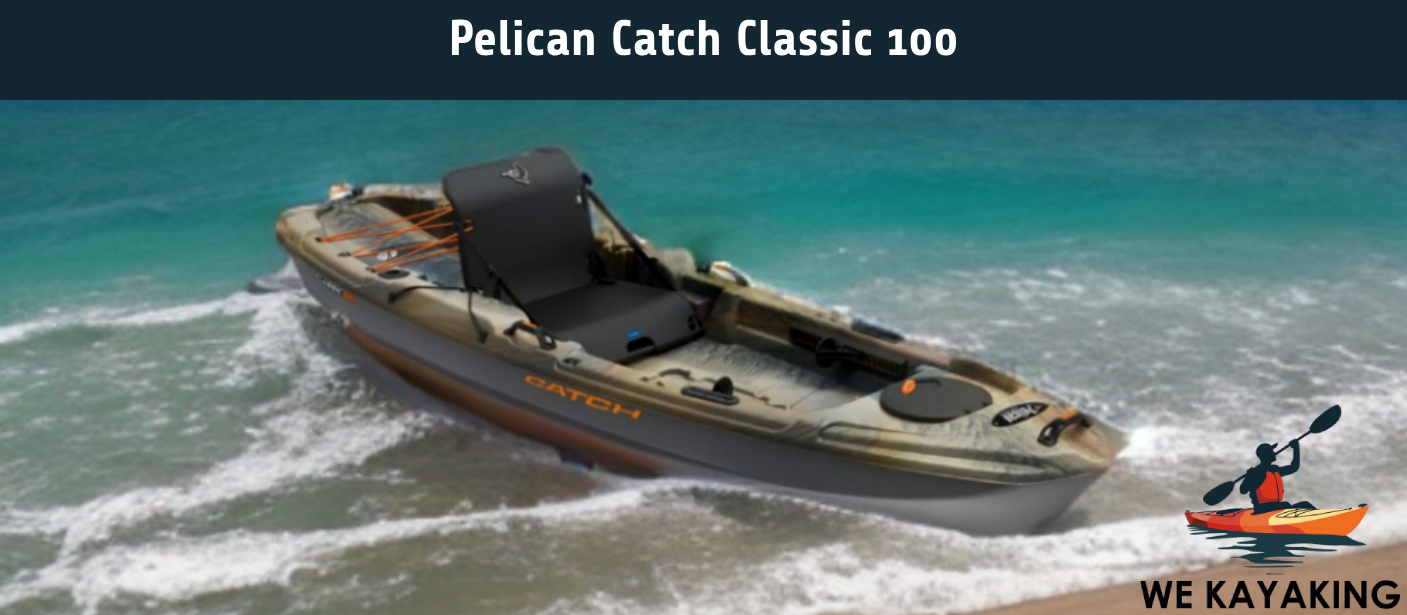 The Pelican Catch Classic 100 is a sit-on-top kayak tailored for fishing enthusiasts seeking a blend of comfort and practical features. It spans 10 feet in length and 34 inches in width, with a weight of approximately 58 lbs, making it a manageable option for solo transport and maneuvering. Its compact size contributes positively to its speed, offering an advantage in windy conditions or when aiming to cover distances with minimal gear. The kayak is praised for its exceptional stability, thanks to its wide base, allowing anglers to confidently stand and cast even in less-than-ideal water conditions. This stability, coupled with a thoughtfully placed rope on the hull, aids in maintaining balance when transitioning to a standing position.
The Pelican Catch Classic 100 is a sit-on-top kayak tailored for fishing enthusiasts seeking a blend of comfort and practical features. It spans 10 feet in length and 34 inches in width, with a weight of approximately 58 lbs, making it a manageable option for solo transport and maneuvering. Its compact size contributes positively to its speed, offering an advantage in windy conditions or when aiming to cover distances with minimal gear. The kayak is praised for its exceptional stability, thanks to its wide base, allowing anglers to confidently stand and cast even in less-than-ideal water conditions. This stability, coupled with a thoughtfully placed rope on the hull, aids in maintaining balance when transitioning to a standing position.
Constructed from durable high-density polyethylene with a resin finish, the Catch 100 is designed to withstand the usual wear and tear associated with kayaking and fishing activities. Despite its robust build, it is recommended to carry the kayak, rather than drag it, to preserve the hull’s integrity over time. The kayak includes a rudder system, enhancing its tracking ability, which is particularly beneficial when fishing as it allows for hands-free course maintenance.
Comfort is a significant consideration in the Catch 100’s design, featuring an Ergocast G2 Dual Position Seating System that provides ample support and adjustability for prolonged periods on the water. Storage solutions are well-considered, with ample space in the bow and stern tank wells secured with bungee cords, catering to the storage needs of anglers. Moreover, the kayak is equipped with four flush-mount rod holders and additional eyelets for attaching gear, making it a functional choice for fishing expeditions.
Priced around $599.99 to $649.99, the Pelican Catch Classic 100 offers a competitive array of features for its cost, presenting a valuable option for both beginner and intermediate kayakers with a focus on fishing. Its design emphasizes stability, comfort, and convenience, making it a compelling choice for those seeking a reliable fishing kayak without the bulk and weight of larger models.
The advantages of the Pelican Catch Classic 100 are listed below.
- The 34-inch wide base provides solid stability, allowing for standing and casting even in choppy waters.
- It is constructed with a tough plastic hull and resin finish, making it resistant to accidental drops or collisions.
- The Pelican Catch features the Ergocast G2 Dual Position Seating System, offering adjustable and comfortable seating for prolonged periods.
- At 58 pounds, it’s manageable for many paddlers to carry solo, and its short keel simplifies transportation.
- Equipped with four flush mount rod holders, accessory eyelets, and an angler ruler, it caters to anglers’ needs.
- Offers ample storage with bungee-secured tank wells and a cockpit designed for convenient gear access.
The disadvantages of the Pelican Catch Classic 100 are listed below.
- Lacks gear tracks for installing additional components to enhance the fishing experience.
- While portable, its weight of 58 pounds still makes it challenging for some individuals to transport alone.
- Despite having a large bow hatch, the opening is small and not watertight, limiting its efficiency.
- The placement of rod holders at the waterline interferes with paddle strokes.
- With a load capacity of 350 pounds, it restricts the amount of gear and catch that is carried.
| Feature | Specification |
| Length | 10' (305 cm) |
| Width | 34" (86 cm) |
| Kayaker Position | On Top |
| Amount of Kayakers | 1 (Solo) |
| Propulsion System | Paddles |
10. Perception Outlaw 11.5
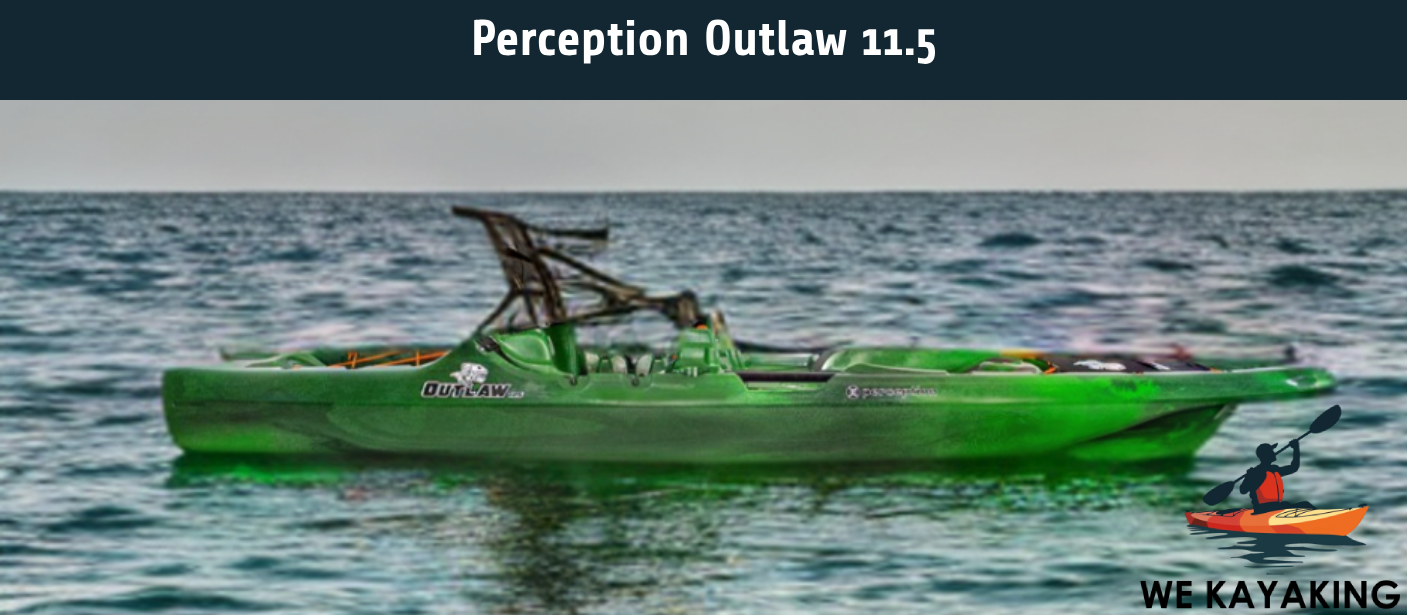 The Perception Outlaw 11.5 is constructed as a sit-on-top fishing kayak, known for offering a stable and spacious platform for anglers. It measures around 11.5 feet in length and has a width that provides a stable base for fishing activities, including standing casts. The weight of such kayaks is balanced to support ease of transport while ensuring durability and performance on the water.
The Perception Outlaw 11.5 is constructed as a sit-on-top fishing kayak, known for offering a stable and spacious platform for anglers. It measures around 11.5 feet in length and has a width that provides a stable base for fishing activities, including standing casts. The weight of such kayaks is balanced to support ease of transport while ensuring durability and performance on the water.
These kayaks are crafted for versatility and intended for use in a variety of water conditions, from calm lakes to flowing rivers. The size and design prioritize stability and maneuverability, making them suitable for both beginners and experienced kayakers. Speed is not the main focus for fishing kayaks like the Outlaw 11.5, but it should offer efficient paddling with good tracking ability.
In terms of construction, Perception Kayaks are known for using high-quality materials that ensure durability and longevity. The Outlaw 11.5 features ample storage options, including gear tracks, rod holders, and tank wells, catering to the needs of fishing enthusiasts. The seating system is probably designed for comfort during long hours on the water, with adjustability to suit different paddling and fishing conditions.
The brand Perception is well-regarded in the kayaking community for producing reliable and functional kayaks, and the Outlaw 11.5 is expected to align with this reputation. Fishing kayaks from Perception, especially those with a size and feature set similar to the Outlaw 11.5, fall within the range of $700 to $1,200. This is a broad estimate, and the actual price could be higher or lower based on the aforementioned factors.
The Advantages of the Perception Outlaw 11.5 are listed below.
- A wide hull design provides excellent stability, making it suitable for fishing and even standing up to cast.
- High-quality seating systems with adjustability for personalized comfort during long hours on the water.
- There are ample storage options, including gear tracks, rod holders, and tank wells, for keeping fishing gear and personal items secure.
- Constructed with high-quality materials that ensure the kayak’s longevity and resistance to impacts and abrasions.
- It is designed to perform well in a variety of water conditions, from calm lakes to flowing rivers.
- Equipped with angler-specific features such as integrated rod holders, accessory mounts, and sometimes even fish finder consoles.
The disadvantages of the Perception Outlaw 11.5 are listed below.
- The robust build and wide hull make the kayak heavier and more challenging to transport and launch, especially solo.
- The kayak’s wide and stable design sacrifices speed and paddling efficiency, making it less ideal for covering long distances quickly.
- While stable, the larger size reduce maneuverability in narrow or cluttered waterways.
- High-quality fishing kayaks with numerous features are more expensive, potentially placing them at a higher price point within the market.
- The kayak’s length and width require more storage space, which is a consideration for those with limited storage options.
- For beginners, the wealth of features and options for customization is overwhelming and requires a learning period.
| Feature | Specification |
| Length | Approximately 11.5 feet |
| Width | around 34 inches |
| Kayaker Position | On Top |
| Amount of Kayakers | 1 (Solo) |
| Propulsion System | Paddles |
What is a kayak?
A kayak is a small, narrow watercraft traditionally propelled utilizing a double-bladed paddle. Originating from the indigenous Inuit, Aleut, and Yup’ik peoples of the Arctic regions, kayaks were initially constructed from animal skins stretched over a frame made from wood or whalebone. These vessels were used primarily for hunting and fishing, designed to navigate the icy waters with agility and stealth. The word “kayak” itself means “man’s boat” or “hunter’s boat,” and the design of these boats is closely tied to the cultures that created them, reflecting their deep understanding of their local environments and the need for efficient, seaworthy vessels.
Modern kayaks have evolved from their traditional counterparts, now being manufactured from a variety of materials, including fiberglass, plastic, and even inflatable fabrics, catering to different paddling environments and purposes. Today’s kayaks come in several designs, including sit-on-top, sit-inside, and inflatable models, each offering various features tailored to specific activities such as recreational paddling, touring, whitewater kayaking, and fishing. Despite these advancements, the core principles of kayak design—stability, maneuverability, and seaworthiness—remain central to their construction. Kayaking has grown into a popular water sport and recreational activity, allowing paddlers to explore a range of waterways, from tranquil lakes and rivers to challenging ocean waves and rapids, fostering a deep connection with nature and providing a platform for adventure and exploration.
What sizes of kayaks exist?
Kayaks come in various sizes to accommodate different water conditions, uses, and paddler preferences. The length of kayaks ranges from about 6 feet (1.83 meters) for compact, playful whitewater models to over 18 feet (5.49 meters) for fast, efficient sea kayaks designed for long-distance touring.
The width, or beam, of kayaks ranges from about 20 inches (50.8 cm) for narrow racing kayaks, which prioritize speed and efficiency, to around 36 inches (91.44 cm) for stable fishing and recreational kayaks. The size of the kayak directly impacts its performance characteristics, including stability, maneuverability, speed, and capacity.
What shapes of kayaks exist?
Kayaks are designed in a variety of shapes, each tailored to specific types of water conditions, activities, and paddler preferences. The primary shapes include the traditional rounded hull, which offers excellent maneuverability and is ideal for rough waters like those encountered in whitewater kayaking. The V-shaped hull, or displacement hull, is common in touring and sea kayaks, cutting through the water efficiently and aiding in straight-line tracking, making it suitable for longer distances in open water. Flat hulls provide high initial stability, making them popular choices for recreational kayaks, fishing, and beginner models. Some kayaks feature a pontoon or tunnel hull, which combines elements of flat and rounded shapes for a balance of stability and maneuverability, mostly seen in sit-on-top kayaks.
Furthermore, kayaks also vary in their deck designs and cockpit configurations, influencing their overall shape and usability. Sit-on-top kayaks have an open deck, allowing for easy entry and exit, making them a favored choice for casual paddling and fishing, especially in warmer climates. Sit-inside kayaks enclose the paddler’s lower body within the hull, offering protection from the elements and water, which is advantageous in colder conditions or rough waters.
The shape of the cockpit, from large and open to small and snug, affects the kayak’s performance and the paddler’s control. Inflatable kayaks present another shape category, with their buoyant, air-filled chambers providing a portable and versatile option, though with different performance characteristics compared to rigid models. Each kayak shape has been developed with specific environments and uses in mind, from serene lake paddling to navigating challenging sea routes, ensuring there’s a kayak shape suited to every type of adventurer.
What materials are kayaks made from?
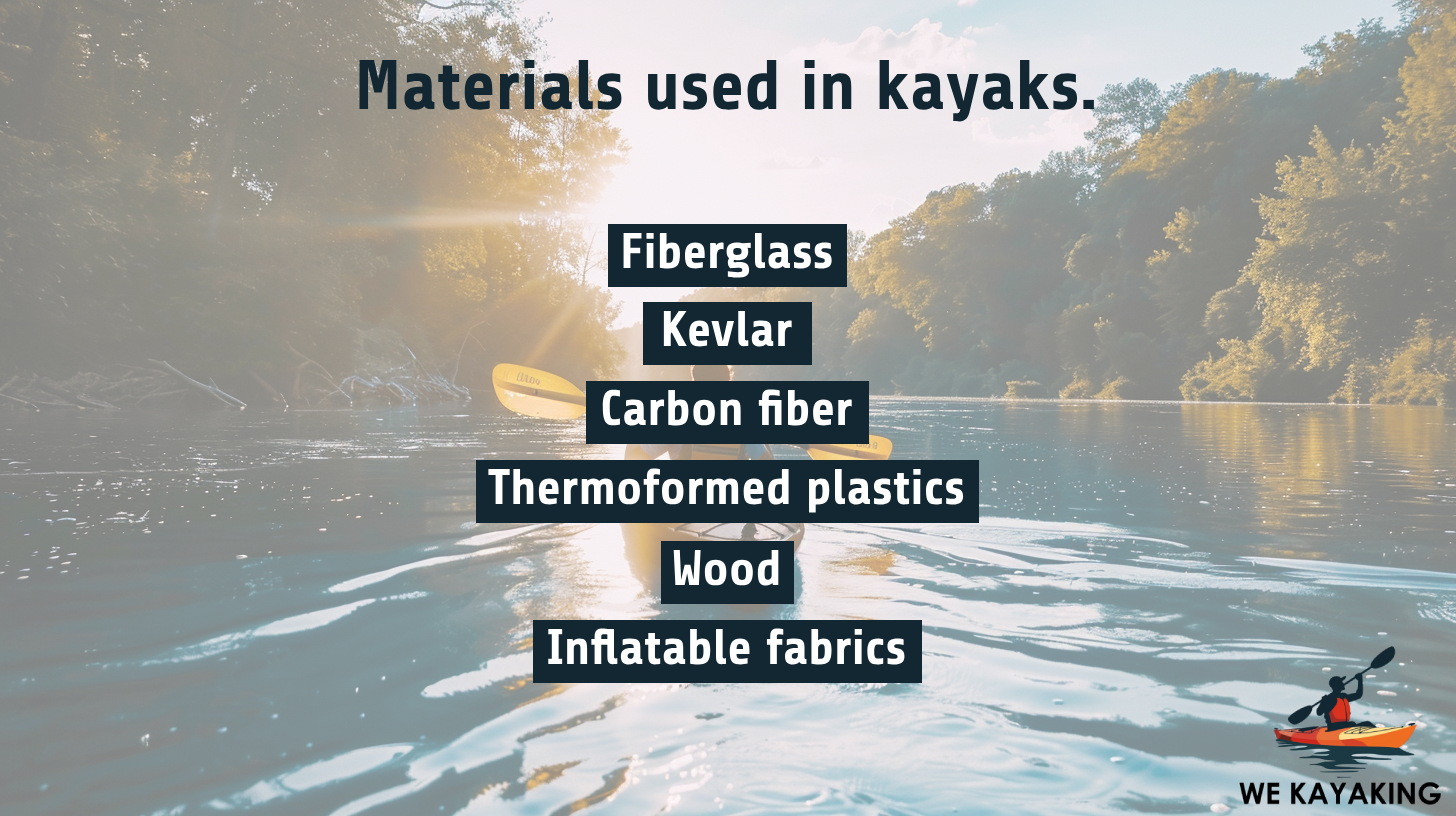 Kayaks are constructed from a variety of materials, each offering distinct benefits in terms of durability, weight, performance, and cost. The most common materials include polyethylene plastic, composite materials (such as fiberglass, Kevlar, and carbon fiber), thermoformed plastics, wood, and inflatable fabrics.
Kayaks are constructed from a variety of materials, each offering distinct benefits in terms of durability, weight, performance, and cost. The most common materials include polyethylene plastic, composite materials (such as fiberglass, Kevlar, and carbon fiber), thermoformed plastics, wood, and inflatable fabrics.
Polyethylene plastic is the most widely used material for recreational kayaks due to its high durability and resistance to impact, making it ideal for beginners and rougher paddling conditions. However, it’s heavier than other materials and degrades with prolonged UV exposure. Composite kayaks, made from layers of fiberglass, Kevlar, or carbon fiber, are lighter and offer superior performance and speed, but they come at a higher cost and are less resistant to impact damage. Thermoformed plastics, created by heating and molding sheets of high-density plastic, strike a balance between the durability of polyethylene and the lightweight, sleek performance of composites, at a mid-range price point.
Wooden kayaks, which are either handcrafted or assembled from kits, offer a traditional aesthetic and the satisfaction of building one’s vessel. They are lightweight and perform well but require regular maintenance to protect the wood from water damage. Inflatable kayaks, made from PVC or Hypalon, provide the ultimate in portability and storage convenience. They are perfect for casual paddlers with limited space. While not as performance-oriented as rigid kayaks, modern inflatable designs have improved in terms of durability and on-water capabilities.
What are the most popular brands for kayaks?
When it comes to kayaks, several brands stand out for their quality, innovation, and wide range of products that cater to different paddling styles and preferences. These are the most popular and widely recognized kayak brands in the paddling community.
- Perception stands out for its long history and commitment to quality in the kayak industry. It’s highly regarded for producing innovative designs that cater to both recreational paddlers and serious anglers, with a focus on durability, comfort, and performance.
- Pelican is celebrated for its broad range of kayaks, including both sit-on-top and sit-inside models. Known for integrating advanced technology into their products, Pelican kayaks are appreciated for their lightweight yet sturdy builds, making kayaking accessible to a wider audience.
- Lifetime has made a name for itself by offering a variety of affordable, beginner-friendly kayaks. Their products are known for being stable and durable, making them ideal choices for casual paddlers and those new to the sport.
- Sun Dolphin is recognized for its user-friendly kayaks that provide great value for recreational users. The brand focuses on creating kayaks that are easy to handle and maintain, catering to those looking for simple, enjoyable experiences on the water.
- NRS (Northwest River Supplies) is revered in the outdoor sports industry for its high-quality gear, including kayaks designed for both whitewater and calm water adventures. Their products are favored by enthusiasts for their exceptional durability, performance, and adaptability to various conditions.
- Though Driftsun is perhaps less widely known than some other brands, it is quickly gaining recognition for its range of inflatable and hardshell kayaks. The brand emphasizes portability and convenience without compromising on the quality and functionality of its kayaks.
- Aquaglide specializes in inflatable kayaks and water sports equipment. It is renowned for innovation and quality. Their kayaks are designed for easy transport and storage, making them popular among adventurers who value flexibility and convenience.
- INTEX is a household name in the inflatable product market, and their foray into inflatable kayaks has been well-received. Their kayaks, known for being budget-friendly and easy to use, are perfect for casual paddling and family outings, offering an accessible entry point into the world of kayaking.
Each of these brands brings its unique strengths to the table, from Perception’s and Pelican’s wide-ranging and innovative lineups to Lifetime’s and Sun Dolphin’s focus on affordability and user-friendliness, and from NRS’s rugged designs to Driftsun’s and Aquaglide’s emphasis on portability and INTEX’s focus on accessibility.
How fast are kayaks?
Kayak speed varies based on the type of kayak, water conditions, and the paddler’s skill and strength. The average speed of a recreational kayak is around 2 to 4 miles per hour (3.2 to 6.4 kilometers per hour). Touring kayaks, which are longer and designed for distance paddling, average between 3 to 5 miles per hour (4.8 to 8 kilometers per hour). Performance or racing kayaks, built for speed and efficiency, exceed 5 miles per hour (8 kilometers per hour) but require a skilled paddler to achieve and maintain such speeds.
Factors influencing kayak speed include the kayak’s hull design, length, and width. Longer and narrower kayaks offer higher speeds due to their more efficient hydrodynamics. Paddler experience also plays a major role; more experienced kayakers maintain higher speeds through efficient paddle strokes and better endurance. Water conditions such as currents, waves, and wind either aid or hinder a kayak’s speed.
A study published in the “Journal of Sports Sciences” analyzed the impact of kayak design on speed and found that reducing water resistance through optimized hull design significantly increases speed. This underscores the importance of kayak design in achieving higher speeds. Therefore, while kayaks are relatively fast, their speed is contingent upon a blend of design factors and user input.
Are kayaks safe?
Yes, kayaks are safe when used properly and with appropriate safety measures in place. The safety of kayaking, like any water sport, depends on several factors including the paddler’s skill level, environmental conditions, and adherence to safety guidelines.
Kayaks are designed with various safety features, such as stability in the water, which is enhanced by the kayak’s width and hull design. Sit-on-top kayaks, for instance, offer more stability and are easier to re-enter if capsized, making them a safer choice for beginners or for use in rougher waters. Additionally, modern kayaks come with built-in buoyancy, which helps them remain afloat even when filled with water.
However, safety also heavily relies on the user’s actions. Wearing a personal flotation device (PFD) is crucial for ensuring safety while kayaking. Paddlers should also be aware of their skill level and avoid water conditions that exceed their abilities. Proper training on how to handle capsizes and self-rescue techniques considerably increase safety. Environmental awareness, including understanding weather and water conditions, is also vital.
A study by the “National Center for Cold Water Safety” underscores the importance of preparation and adherence to safety practices in preventing accidents and enhancing the safety of water activities like kayaking. Therefore, while kayaking is inherently safe with the right precautions, the responsibility largely falls on the individual paddler to maintain this safety through proper preparation, equipment, and respect for the water.
Can kayaks withstand strong waves?
Yes, kayaks do withstand strong waves, but their ability to do so varies based on the kayak design, the skill level of the paddler, and the conditions of the waves. Sea kayaks and whitewater kayaks, in particular, are designed with features that enhance their stability and performance in rough water conditions.
Sea kayaks are longer and have a sleek design to cut through waves efficiently, and they include features like a rudder or skeg to improve tracking in choppy waters. Their construction allows for better handling of swells and waves found in open water environments. Whitewater kayaks, on the other hand, are shorter and more maneuverable, designed to navigate and withstand the turbulent waters of river rapids.
Paddlingspace.com further elaborates that the paddler’s experience and techniques also play a critical role in managing strong waves. Effective bracing, edging, and rolling techniques help kayakers maintain stability and recover from capsizes in rough waters.
Are kayaks cold temperature resistant?
Yes, kayaks are cold temperature resistant, especially when properly equipped and used with appropriate gear. For winter kayaking, sit-inside kayaks are recommended due to their better protection against cold water and wind.
According to a study titled “WINTER KAYAKING: THE ULTIMATE GUIDE TO COLD WEATHER PADDLING,” it’s crucial to have the right safety gear, including life vests that provide buoyancy and insulation, spray skirts to keep the cockpit dry, and additional equipment like waterproof phone cases and dry bags. Proper attire, including layering with moisture-wicking base layers, insulation, and a waterproof outer layer, is essential to prevent hypothermia and ensure safety and comfort while kayaking in cold conditions.
Can you store kayaks outside?
Yes, storing a kayak outside is perfectly fine, but it requires careful consideration to protect it from the elements and potential damage. When storing a kayak outdoors, it’s crucial to find a shaded spot to prevent UV damage from direct sunlight, as exposure to UV rays harms various hull materials. Covering the kayak with a weather-resistant tarp, using a kayak cover, or storing it under a deck or covered patio offers protection. It’s also important to keep the kayak out of sight to deter theft and ensure it’s stored in a way that prevents moisture accumulation, which could lead to mold and fungus growth.
An article by Steve Morrow titled “Master the Art of Storing A Kayak Outside” suggests storing the kayak off the ground to avoid moisture and to prevent animals from making it a temporary home, which could cause damage. Using a rack or suspension system helps maintain the kayak’s shape by distributing its weight evenly and preventing deformation of the hull. When winter approaches, additional precautions are necessary, especially in cold climates, to protect the kayak from freezing temperatures and moisture, which could be disastrous. If using a plastic tarp for protection, it’s best to suspend it so it doesn’t touch the kayak directly to prevent mold buildup.
Can kayaks withstand crashing into river rocks?
Yes, kayaks are able to withstand crashing into river rocks to a certain extent, especially those designed for whitewater and river racing. The construction of river racing kayaks emphasizes flexibility and impact resistance to cope with potential impacts from rocks and prevent hull damage. These kayaks often incorporate features like pedal-controlled under-stern rudders for enhanced maneuverability, allowing them to navigate through challenging river conditions more effectively. Materials used in their construction are chosen for their ability to absorb impacts without suffering critical damage.
Paddling Magazine’s issue on the best river kayaks of 2024 further illustrates that whitewater river kayaks’ design is tailored for navigating moderate to difficult rapids. They are shorter (less than 10 feet long), making them highly maneuverable, but also less stable on calm water than recreational river kayaks. These kayaks have more rocker, allowing them to slide over rocks and waves more easily, contributing to a drier ride. The materials used, such as rotomolded polyethylene plastic, are known for their durability and impact resistance, making these kayaks suitable for the everyday wear and tear of river kayaking, including contact with rocks.
Can kayaks withstand a crocodile bite?
No, kayaks do not have the capacity to withstand a crocodile bite. In an article by Romero Esposito titled “Crocodiles in Kayaks: How to Avoid Being Attacked," crocodiles are known for their powerful bite force, which is among the strongest in the animal kingdom. Crocodile attacks on kayaks are rare but occur, particularly if the crocodile is territorial or hungry. Crocodiles are curious by nature and are attracted to kayaks, especially if they associate them with food or perceive them as a threat to their territory. In such cases, a crocodile attacks a kayak, and given their strength and the sharpness of their teeth, they could potentially puncture or damage a kayak.
Killerkayaks.com published an article named “Do Crocodiles Attack Kayakers? The Breakdown!” and it suggests that to minimize the risk of a crocodile attack while kayaking, it’s advisable to stay alert, avoid areas known for crocodile presence, especially during their more active periods, and never provoke or feed them. If you encounter a crocodile, maintaining distance and paddling away calmly is recommended. Despite precautions, the unpredictable nature of wild animals like crocodiles means there’s always a risk when kayaking in their habitats.
Are kayaks stable?
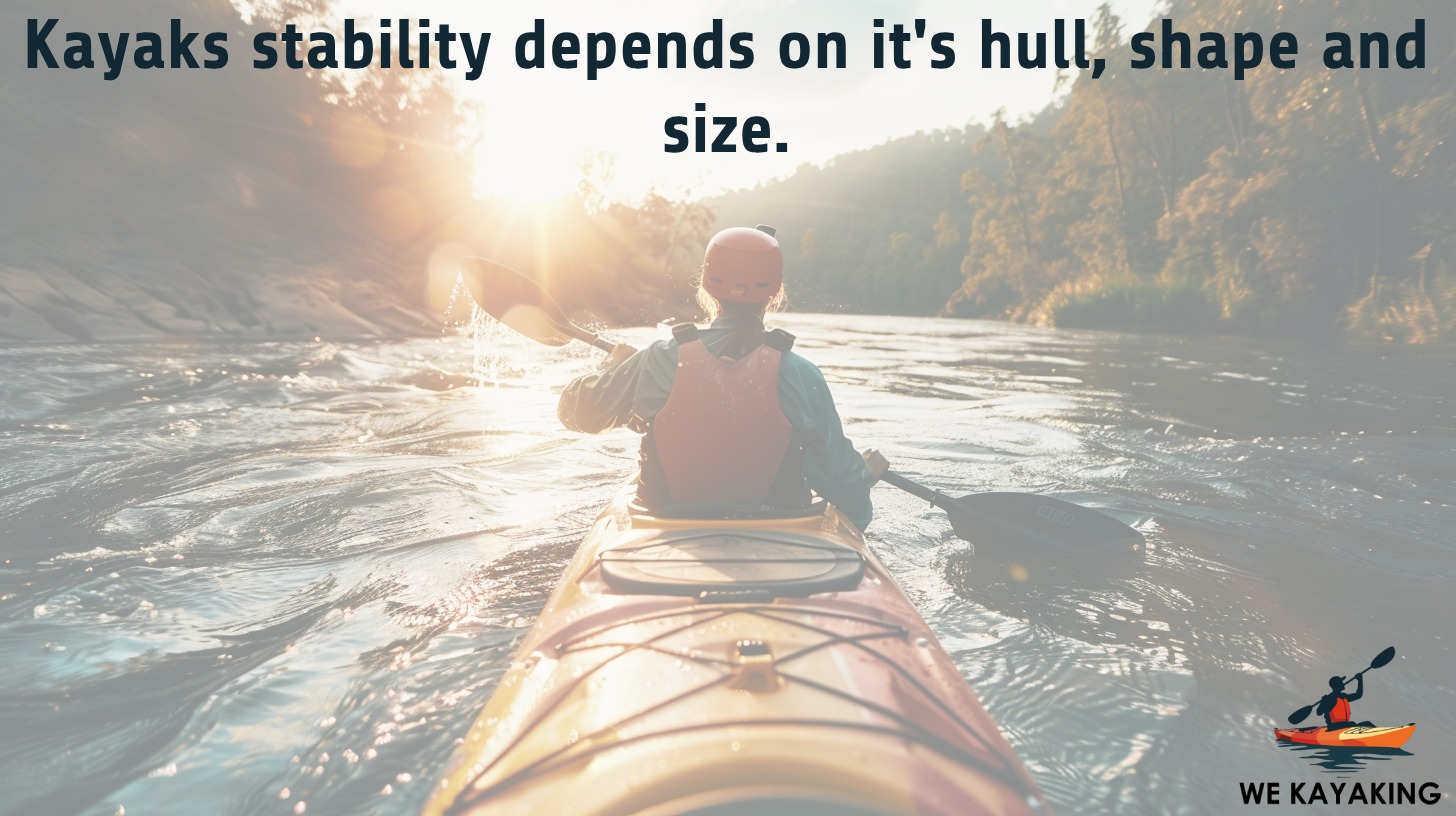 Yes, kayaks are stable, but the level of stability varies depending on the kayak’s design, particularly the hull shape and size. The stability of the kayak will vary depending on the design of the hull. Kayaks with a longer and narrower hull tend to be faster but less stable compared to those with a shorter, wider design. Many recreational kayaks feature a flat hull, which enhances primary stability, making it less likely for the kayak to tip over, especially in calm waters.
Yes, kayaks are stable, but the level of stability varies depending on the kayak’s design, particularly the hull shape and size. The stability of the kayak will vary depending on the design of the hull. Kayaks with a longer and narrower hull tend to be faster but less stable compared to those with a shorter, wider design. Many recreational kayaks feature a flat hull, which enhances primary stability, making it less likely for the kayak to tip over, especially in calm waters.
A report named “Are Kayaks Stable? (Is A Wider Kayak More Stable?)” by paddlecamp.com entails that the hull type influences a kayak’s performance, including its stability, speed, glide, and maneuverability. A pontoon hull, for example, prioritizes stability at the expense of speed and maneuverability, making it an excellent choice for beginners who value stability above all else.
Are kayaks easy to tip over?
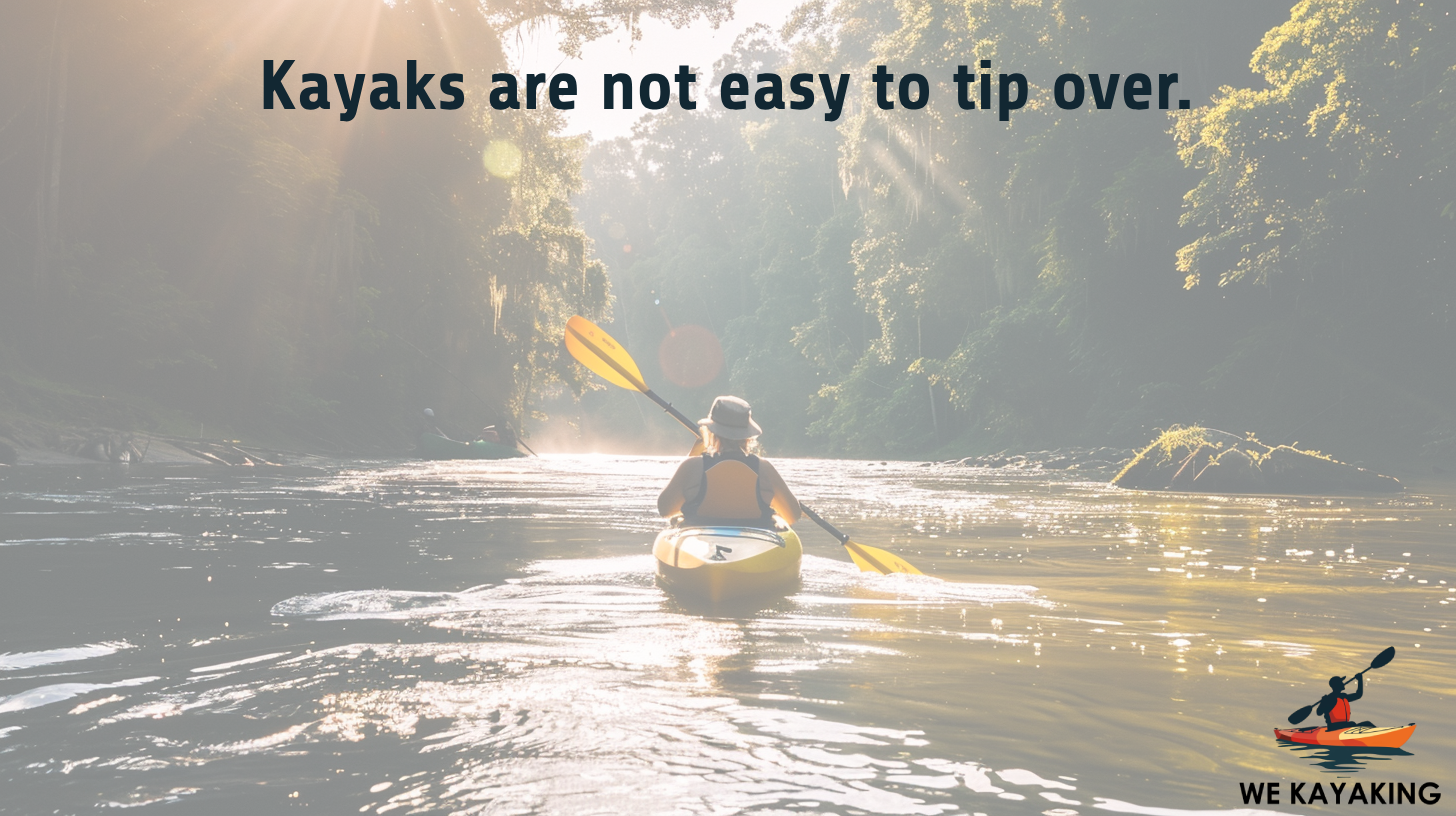 No, kayaks are not easy to tip over, as their stability largely depends on their design, the conditions in which they are used, and the skill level of the paddler. “Are Kayaks Stable? The Complete Guide to Kayak Stability” by Alex Buchenev suggests that kayaks with wider hulls and those designed for recreational use tend to have good primary stability, making them more resistant to tipping over, especially in calm waters. However, kayaks with narrow hulls and those designed for speed or specific conditions like whitewater have less primary stability but greater secondary stability, which means they feel tippy but are less likely to capsize when leaned on an edge or in rough water.
No, kayaks are not easy to tip over, as their stability largely depends on their design, the conditions in which they are used, and the skill level of the paddler. “Are Kayaks Stable? The Complete Guide to Kayak Stability” by Alex Buchenev suggests that kayaks with wider hulls and those designed for recreational use tend to have good primary stability, making them more resistant to tipping over, especially in calm waters. However, kayaks with narrow hulls and those designed for speed or specific conditions like whitewater have less primary stability but greater secondary stability, which means they feel tippy but are less likely to capsize when leaned on an edge or in rough water.
The concept of primary and secondary stability is crucial in understanding a kayak’s tipping behavior. Primary stability refers to how stable the kayak feels when it is sitting flat on the water, while secondary stability refers to how stable it feels when it is leaned on its side. Kayaks with good primary stability are less likely to feel tippy and are more beginner-friendly, whereas kayaks with good secondary stability feel more tippy initially but are less likely to capsize in rough conditions.
How much weight can kayaks hold?
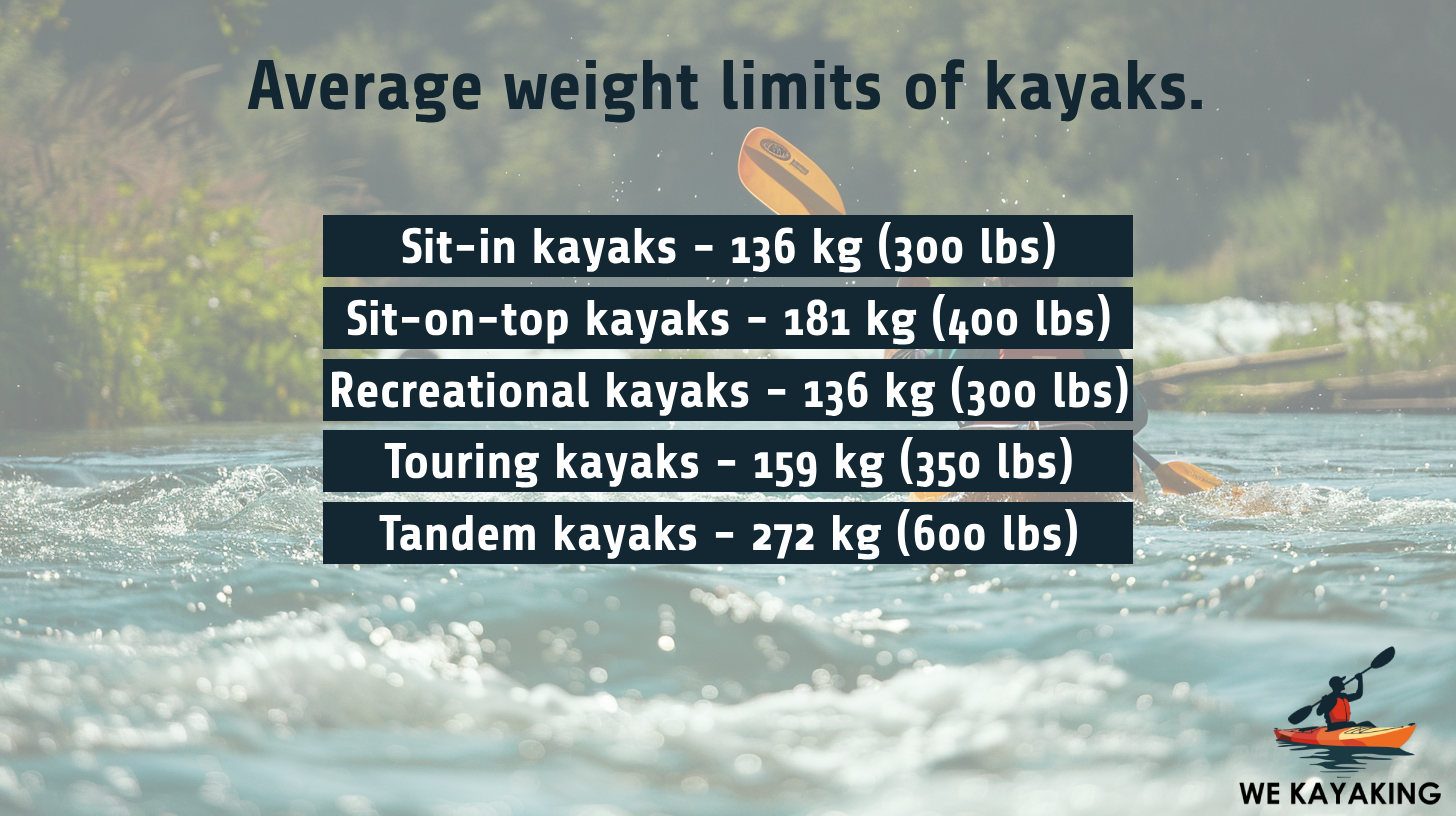 Kayak weight limits vary depending on their type and design. For sit-in kayaks, the average weight capacity is about 136 kg (300 lbs). Sit-on-top kayaks have a higher capacity, ranging between 159 kg (350 lbs) and 181 kg (400 lbs). Recreational kayaks, which are designed for calm waters and are shorter and wider, hold between 113 kg (250 lbs) and 136 kg (300 lbs). Touring or expedition kayaks, known for their longer and slimmer designs for better glide and efficiency over long distances, have an average weight limit of about 159 kg (350 lbs). Tandem kayaks, built to accommodate more than one paddler, offer the highest capacity, usually between 227 kg (500 lbs) and 272 kg (600 lbs).
Kayak weight limits vary depending on their type and design. For sit-in kayaks, the average weight capacity is about 136 kg (300 lbs). Sit-on-top kayaks have a higher capacity, ranging between 159 kg (350 lbs) and 181 kg (400 lbs). Recreational kayaks, which are designed for calm waters and are shorter and wider, hold between 113 kg (250 lbs) and 136 kg (300 lbs). Touring or expedition kayaks, known for their longer and slimmer designs for better glide and efficiency over long distances, have an average weight limit of about 159 kg (350 lbs). Tandem kayaks, built to accommodate more than one paddler, offer the highest capacity, usually between 227 kg (500 lbs) and 272 kg (600 lbs).
It’s important to consider that exceeding a kayak’s weight limit negatively impacts its performance, making it more challenging to paddle, less stable, and more prone to capsizing. To ensure optimal performance, it’s advisable to use only about 65-70% of a kayak’s maximum capacity, taking into account the weight of the paddler(s), gear, and any additional items. For instance, if you and your gear weigh around 90 kg (200 lbs), you should look for a kayak with a maximum capacity rating of at least 130 kg (285 lbs) to 136 kg (300 lbs) to maintain a comfortable and safe experience on the water.
How much does a kayak weigh on average?
On average, a single kayak at 35 pounds (16 kg), while tandem kayaks, which are designed for two people, have an average weight of around 65 pounds (29.5 kg). Fishing kayaks, known for their additional features and durability, are heavier, with some models weighing over 120 pounds (54 kg). The weight of a kayak varies based on its construction materials and design, with recreational kayaks made from rotomolded plastic often weighing between 50 to 60 pounds (23 to 27 kg). If you’re looking for a lighter option, touring kayaks made from composite materials like fiberglass or carbon fiber weigh between 25 to 35 pounds (11 to 16 kg).
Inflatable kayaks present a lightweight alternative, weighing between 25 to 40 pounds (11 to 18 kg), depending on their design and the materials used. Some ultra-lightweight inflatable models weigh as little as 17 pounds (7.7 kg), making them easy to transport and ideal for those who prioritize portability.
Is it hard to transport kayaks?
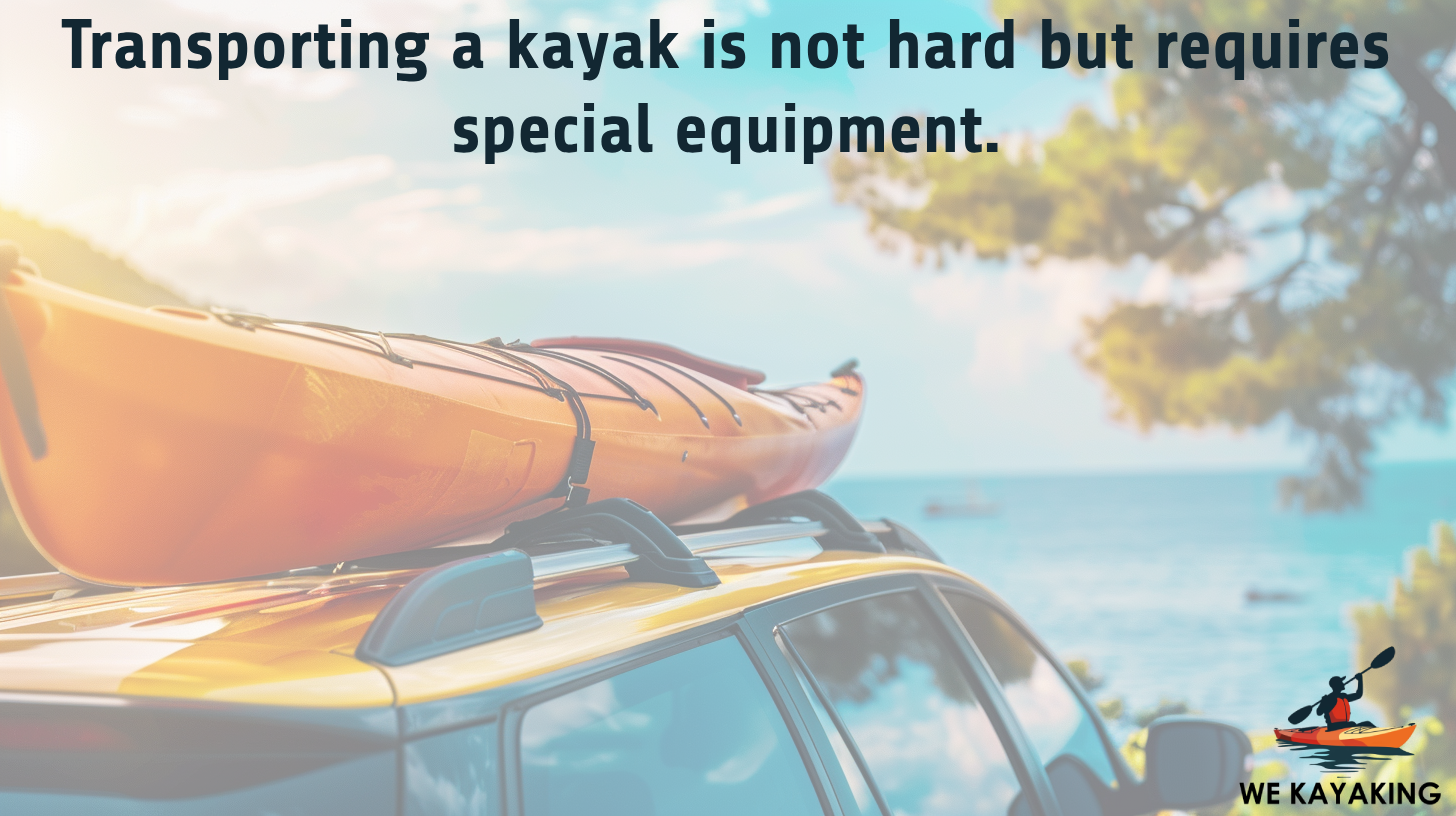 No, transporting kayaks is not hard, but it does require some preparation and the appropriate equipment to ensure it’s done safely and efficiently. The challenge of transporting a kayak largely depends on its weight and size, the type of vehicle you have, and the transportation gear you use.
No, transporting kayaks is not hard, but it does require some preparation and the appropriate equipment to ensure it’s done safely and efficiently. The challenge of transporting a kayak largely depends on its weight and size, the type of vehicle you have, and the transportation gear you use.
Lighter and more compact kayaks are easier to manage, and vehicles equipped with roof racks or trailers specifically designed for kayaks make the process smoother. Employing the right accessories like kayak carriers, saddles, and lift assists also simplifies loading, securing, and unloading the kayak. Additionally, your physical ability and familiarity with the proper techniques for handling and securing a kayak play crucial roles in the ease of transportation. With the right approach and tools, transporting a kayak becomes a straightforward task that gets easier with experience.
Is it hard to learn to control a kayak?
Learning to control a kayak is not difficult and is a scalable activity. For beginners looking to enjoy recreational kayaking on calm waters, the process is quite straightforward, requiring minimal equipment and basic skills that are quickly learned. Basic paddling techniques, for instance, are grasped in a single kayaking lesson, making kayaking accessible and enjoyable for a wide range of people, from young children to the elderly.
However, kayaking becomes more challenging as you venture into more advanced types of kayaking, such as navigating whitewater rapids, and ocean waves or embarking on long-distance tours. These activities demand greater physical fitness, more refined paddling techniques, and a deeper understanding of kayaking dynamics and safety protocols. Weather conditions like wind, rain, and cold also add to the challenge, making it harder to maintain control and enjoy the experience.
Are kayaks maneuverable?
Yes, kayaks are maneuverable, with their agility largely influenced by their design, including length, width, and hull shape. Sit-on-top kayaks, known for their stability and ease of re-entry, are wider, which impacts their speed and nimbleness but still allows for effective maneuvering in various water conditions. Sit-in kayaks offer a different level of maneuverability due to the paddler’s lower center of gravity and the ability to use their body to aid in steering and control, especially useful in rougher waters or when precise movements are needed.
Paddleout.com wrote an article by Steve Morrow named ”A Beginners Guide to Different Types of Kayaks,” which makes a point about how the kayak’s dimensions play a crucial role in its handling. Longer and narrower kayaks, such as touring or sea kayaks, are built for speed and straight tracking, making them less agile in tight turns but excellent for long-distance paddling. Conversely, shorter and wider kayaks are more adept at quick turns, making them more maneuverable in confined spaces but slower over long distances.
Tom Kilpatrick wrote under the title “Types of Kayaks: Different Kayak Styles Explained.” The article illustrated that materials and construction also affect a kayak’s maneuverability. Hardshell kayaks made from durable materials like polyethylene withstand various conditions, aiding in maneuvering through challenging terrain. Inflatable kayaks, while offering high stability and convenience in transport and storage, do not match the responsiveness of hardshell models but have been improving in performance.
Are kayaks good for beginners?
Yes, kayaks are good for beginners, offering a range of options that cater to various needs and preferences. Beginners choose from sit-on-top kayaks, which are praised for their ease of use, stability, and simplicity of getting in and out, making them ideal for leisure activities and warmer climates. These kayaks have integrated or adjustable footrests and self-bailing scupper holes, adding to their convenience. However, they leave you more exposed to the elements due to their open design.
According to Paddleout.com, an article by Steve Morrow called “6 Best Kayaks For Beginners (2023 Reviews and Guide),” sit-in kayaks provide more coverage, which is beneficial in colder or windier conditions, offering a dryer experience and potentially more control through better contact with the kayak. These models require some practice to master entry and exit, especially with a spray skirt, and to manage water that gets into the cockpit.
In terms of material, hardshell kayaks made of plastic are a durable and affordable choice for beginners, offering a balance between performance and ease of maintenance. Inflatable kayaks present an even more accessible option, known for their ease of transport and storage, making them a practical choice for those with limited space or who prefer not to invest in additional equipment like car racks. Despite their convenience, inflatables require more setup time and come with the risk of punctures, though they are quite resilient and come with repair kits.
Are kayaks good for children?
Yes, kayaks are suitable for children, with specific designs tailored to accommodate their size, strength, and skill level. According to an issue written by PaddleYouth, known as “Best Kayaks for Kids & Youth for 2024,” kayaks are narrower than adult kayaks, often less than 25 inches wide, to allow children easier paddle access to the water. These kayaks are also shorter, usually under 12 feet, making them lighter and more manageable for kids to handle both on and off the water. This combination of reduced width and length ensures that the kayak is stable enough for children yet easy for them to control and enjoy paddling.
Kayaks for younger paddlers come in various styles, including sit-on-top, sit-inside, and inflatable models, each with its own set of benefits. Sit-on-top kayaks are particularly user-friendly for children as they are easy to get onto and aren’t able to be swamped, making them ideal for playing in the water. Sit-inside kayaks offer more protection from the elements, keeping children drier and warmer, which is an advantage in cooler conditions. Inflatable kayaks provide an excellent entry point for kayaking, being highly portable, easy to store, and stable on the water.
When selecting a kayak for a child, it’s crucial to consider the kayak’s weight and the child’s ability to manage it. Lightweight options are preferable as they allow children to carry and maneuver their kayaks more independently. Features like the Perception Prodigy XS and the Old Town Heron Junior are highlighted for their suitability for young kayakers due to their lightweight design and features that enhance safety, stability, and ease of use.
What is the main purpose of kayak?
The main purpose of a kayak is to provide a versatile and personal means of water transportation, enabling a wide range of activities on various bodies of water. Modern kayaks serve diverse purposes, ranging from slow and easy touring on placid water to racing and complex maneuvering in fast-moving whitewater to fishing and long-distance ocean excursions.
This adaptability makes kayaking a popular choice for both recreational and competitive pursuits, appealing to enthusiasts of all skill levels and interests. Whether it’s a serene paddle on a calm lake, navigating through challenging rapids, casting a line in search of the next big catch, or embarking on a multi-day sea kayaking adventure, the kayak’s design and functionality cater to an extensive spectrum of water-based activities.
Can you use kayaks for fishing?
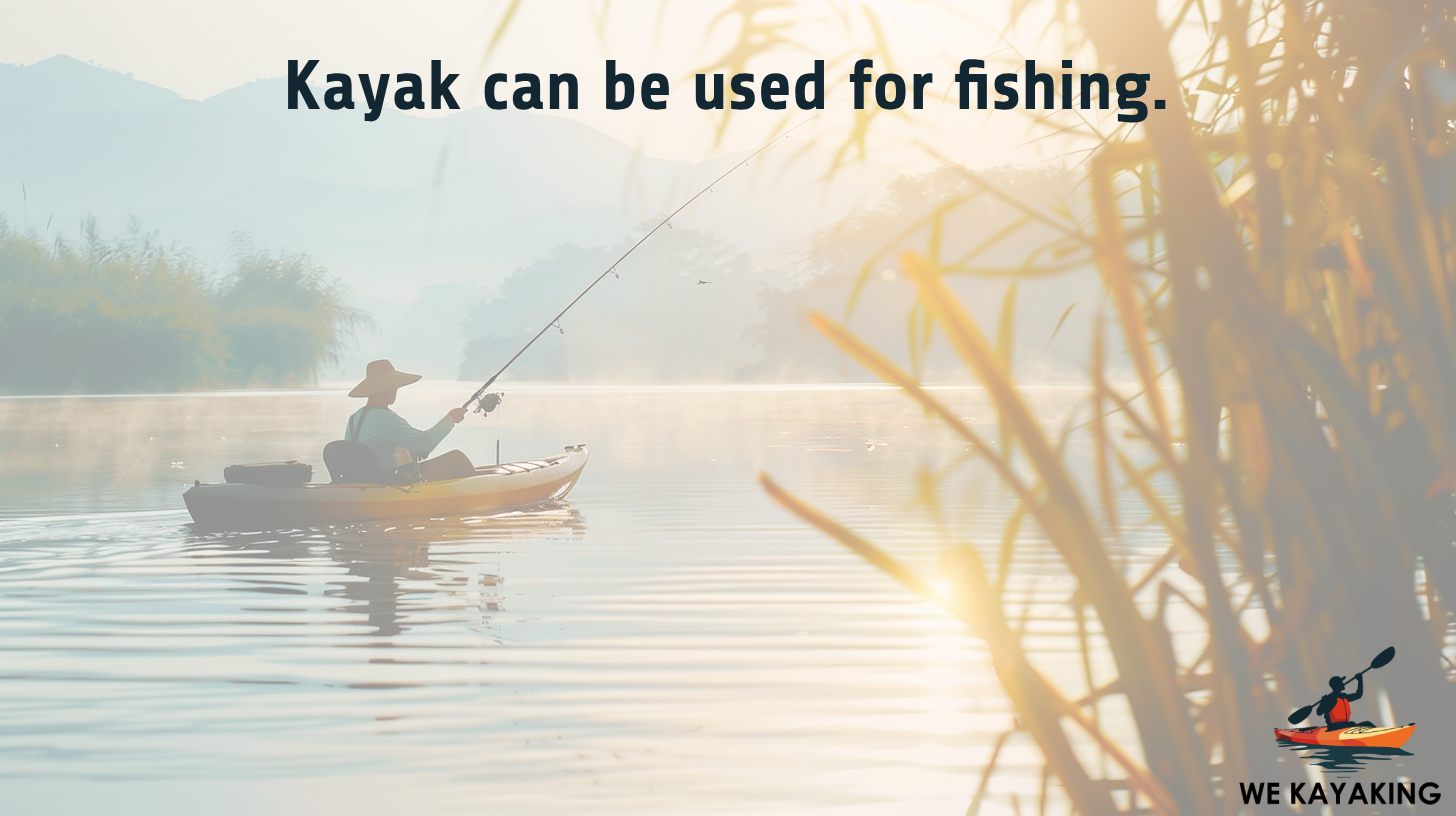 Yes, using kayaks for fishing is fine. According to an article titled “Kayak Fishing Top Tips, Gear Advice, and a Whole Lot More,” they offer an affordable and accessible option for everyone, combining the excitement of fishing with the adventure of kayaking. When choosing a fishing kayak, it’s important to consider the size, as longer kayaks provide more space for gear but are harder to maneuver, while wider kayaks offer more stability. Essential gear for kayak fishing includes a rod, rod holder, anchor, net, and tacklebox, along with safety equipment like a life jacket and whistle.
Yes, using kayaks for fishing is fine. According to an article titled “Kayak Fishing Top Tips, Gear Advice, and a Whole Lot More,” they offer an affordable and accessible option for everyone, combining the excitement of fishing with the adventure of kayaking. When choosing a fishing kayak, it’s important to consider the size, as longer kayaks provide more space for gear but are harder to maneuver, while wider kayaks offer more stability. Essential gear for kayak fishing includes a rod, rod holder, anchor, net, and tacklebox, along with safety equipment like a life jacket and whistle.
What bodies of water are suitable for kayaks?
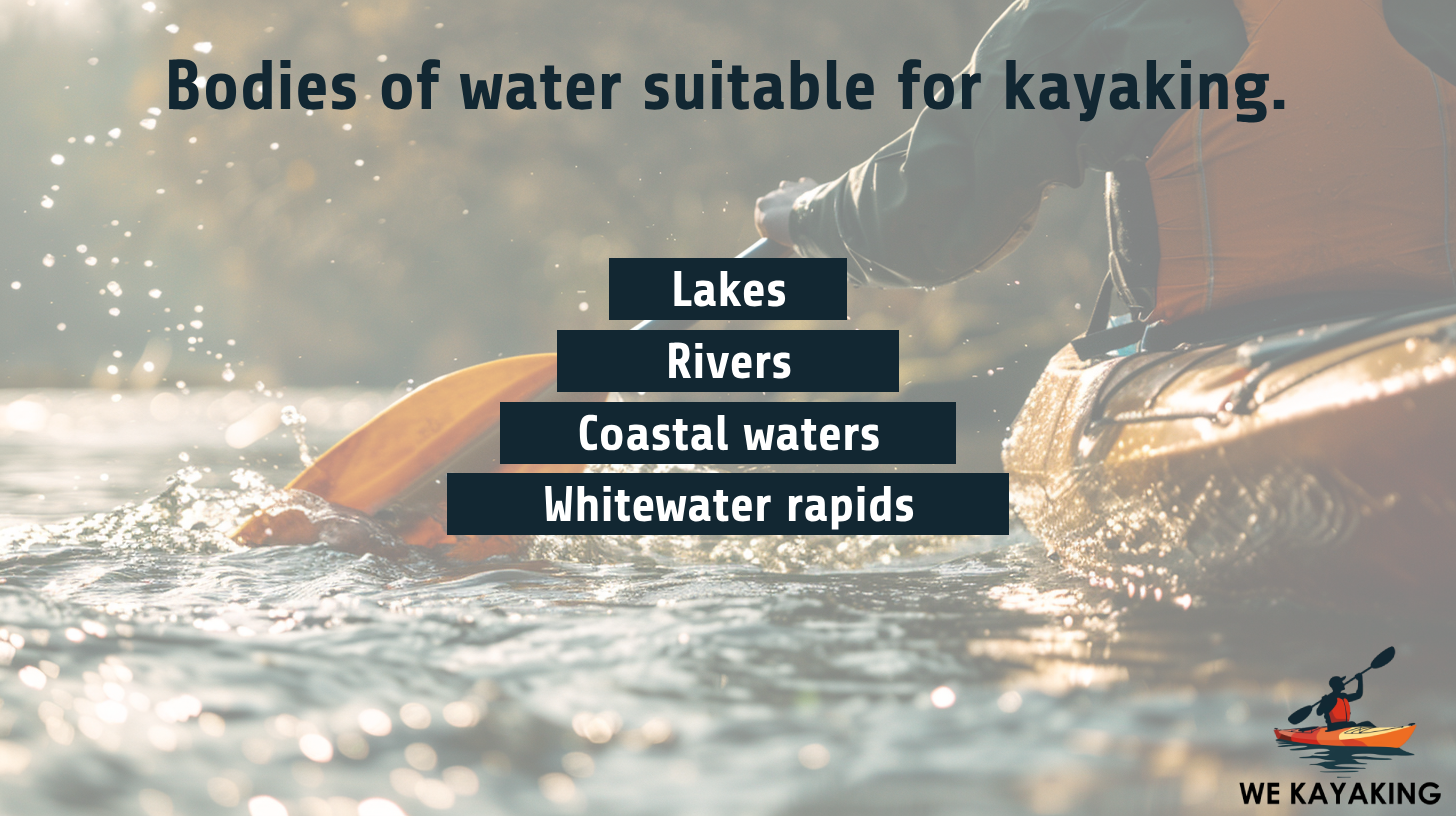 Kayaks are suitable for a wide range of water bodies, including calm lakes, slow-moving rivers, coastal waters, and even challenging whitewater rapids. The versatility of kayaks allows for peaceful paddling on serene lakes, exploration of coastal inlets and bays, and adrenaline-fueled adventures down fast-flowing rivers. The key is choosing the right kayak type and understanding the specific conditions of the water body to ensure safety and enjoyment.
Kayaks are suitable for a wide range of water bodies, including calm lakes, slow-moving rivers, coastal waters, and even challenging whitewater rapids. The versatility of kayaks allows for peaceful paddling on serene lakes, exploration of coastal inlets and bays, and adrenaline-fueled adventures down fast-flowing rivers. The key is choosing the right kayak type and understanding the specific conditions of the water body to ensure safety and enjoyment.
What is considered a good price for the best kayak?
A good price for a high-quality kayak varies widely, ranging from $300 to $1000 USD. Entry-level recreational kayaks tend to be cheaper, while specialized kayaks for touring, fishing, or whitewater are more expensive due to their advanced features and materials. Discounts and used kayaks offer savings, but it’s essential to balance cost with the kayak’s condition and suitability for your intended use. Investing in a kayak that meets your needs without compromising on safety and performance is key.
